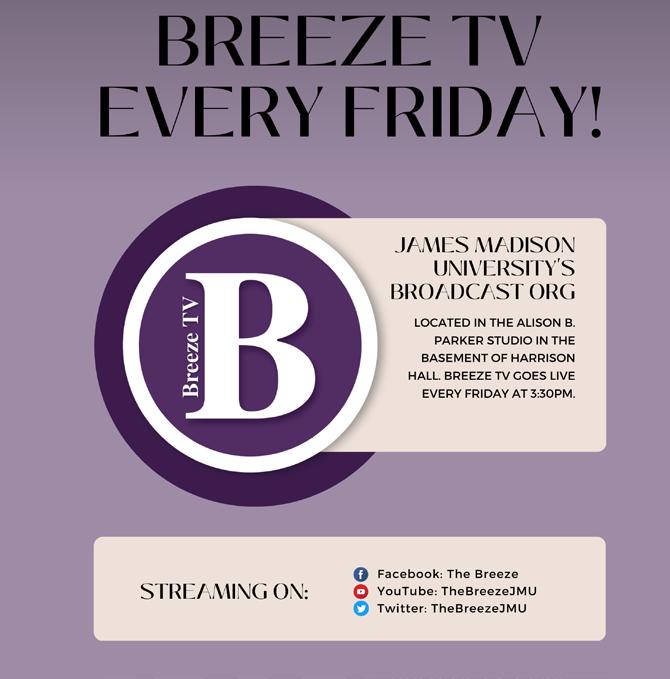JMU swim & dive jumps into new conference
By MADISON HRICIK The BreezeJMU’s swim & dive athletes compete as individuals for the majority of their season. During meets, the Dukes earn points to determine which program wins, but the basic concept is simple: Be the first swimmer to touch the wall and score the most points.
That goes away during conference championships. It’s the one meet a year where JMU head coach Dane Pedersen said he believes in his team coming together.
“When you’re watching each other race and dive and compete, like, all of us get chills the whole time, because it really feels like a full team event,” senior diver Felicity Ryan said. “I think it’s kind of like the last hurrah of our season as a team, and so I think it’s really exciting to see how the whole year’s work kind of goes together.”
JMU swim & dive relies on conference championships for the last-minute NCAA Zone qualifying scores and cuts to finish its regular season strong and advance as individuals to the postseason. There’s no automatic qualifier in conference championships for swim & dive — the only way for an athlete to make it to an NCAA Championship meet is through specific time cuts and scores. Pedersen works with his team to work on their times to inch closer and closer to those parameters by the time conference championships come around.
Community speaks out on Iran protests
By SHIRIN ZIA FAQIRI The BreezeAva Seif, a junior psychology major at JMU, lives a double life — split between worrying about her family stuck in the middle of protests on the other side of the world, and life as a college student here in the U.S.
In Iran, 6,665 miles away from Harrisonburg, protesters have been demonstrating against government restrictions against women for nearly three months.

“I have to go from talking about … prisoners they have that were going to be executed in Iran versus, ‘Oh, how’d you do on that exam?’ You know, it makes the world seem so much bigger than me,” Seif said. “I mean, these people are going to lose their lives and I’m worried about how one class grade is going to impact my GPA … It’s a life versus a grade and it doesn’t add up to the scale.”
On Sep. 13, Mahsa Amini, a 22-yearold woman from Iran, was beaten by the morality police — enough to be sent into
a coma and then pronounced dead after three days in the hospital, according to the BBC. Amini was targeted because her hijab was loose on her head, and her death has sparked a series of youth- and womenled protests in Iran.
After months of protesting, Iran’s attorney general, Mohammad Jafar Montazeri, announced Dec. 3 the morality police will be disbanded, according to a Dec. 5 news article by the BBC. The morality police, or Gasht-e Ershad, was formed after the Islamic Revolution of 1979, and they’re “tasked with ensuring the respect of Islamic morals and detaining people who are perceived to be “improperly dressed,” according to BBC. This includes women covering all of their hair with a hijab and only wearing loosefitting clothing that covers their whole body. Time magazine has also named the women of Iran “Heroes of the Year” because of these protests.
Protests against the regime have been prevalent in Iran since the Islamic Revolution, but not to the same scale as in recent months.
BBC reported that “for the first time, protests
involve people from all sections of society and age groups, and have spread across dozens of cities and towns.” Amini became a face of the protests. Women have burnt their hijabs and cut their hair as acts of defiance.
Bernd Kaussler, a political science professor at JMU who specializes in the history of Iranian politics, said these protests were a “long time coming.”
“It’s always been sort of this demographic time bomb,” Kaussler said. “You have a large majority of highly educated people who are aware of the forces of globalization, what’s happening around the freedoms being enjoyed elsewhere in the world, who are operating within the framework of rather authoritarian governance.”
Delnia Dadkosh, an Iranian entrepreneur who owns Dlnia Hair Salon in Harrisonburg, said her time growing up in Iran was filled with many hardships and difficulties — specifically, in how there isn’t a separation of church and state and women are seen more as property than human.
Current and former JMU football head coaches connect
By SAVANNAH REGER The BreezeMickey Matthews didn’t think he’d speak to his former team after practice on Turkey Day. But there he was, with current JMU football players lasered in on the coach who helmed the program from 1999-2013.
Matthews reciprocated the eye contact. He stood in the middle of a circle following an impromptu invitation from JMU head coach Curt Cignetti. Matthews, who led JMU to its first-ever national championship in 2004, didn’t prepare what he wanted to tell the Dukes, who sported an array of purple, gold and white practice jerseys, black sweatshirts and sweatpants.
The players took a knee around Matthews, readying for his message ahead of JMU’s final game of its inaugural FBS season versus Coastal Carolina.
He said he didn’t have any intention of talking to JMU after practice on Thanksgiving. He came by to catch up with current head coach Curt Cignetti while he visited his daughter and grandchildren.
Then, Cignetti asked if he wanted to speak to his players.

1598 S. Main St. Harrisonburg, VA 22801
PHONE: (540) 568-6127 FAX: (540) 568-7889
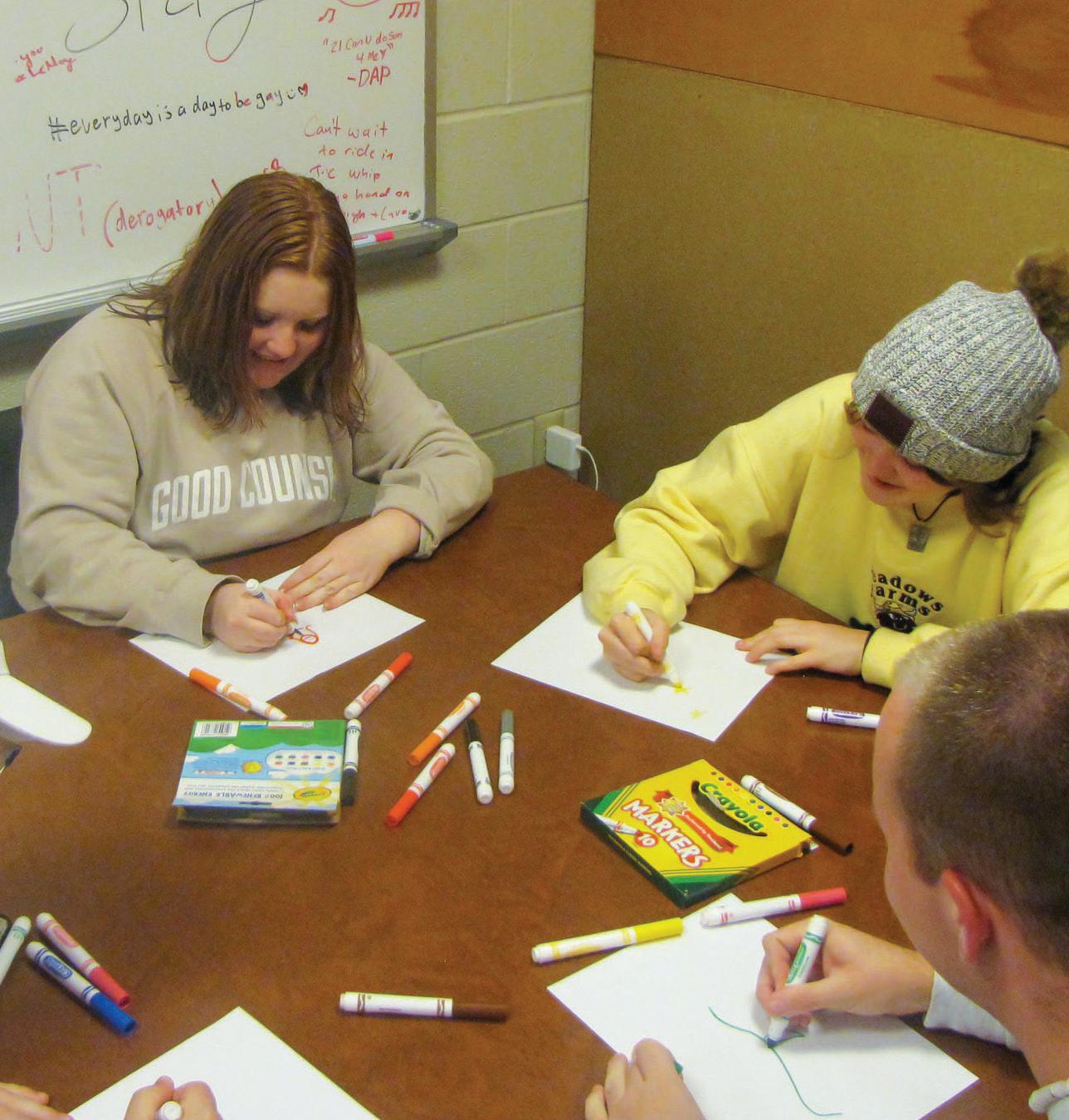

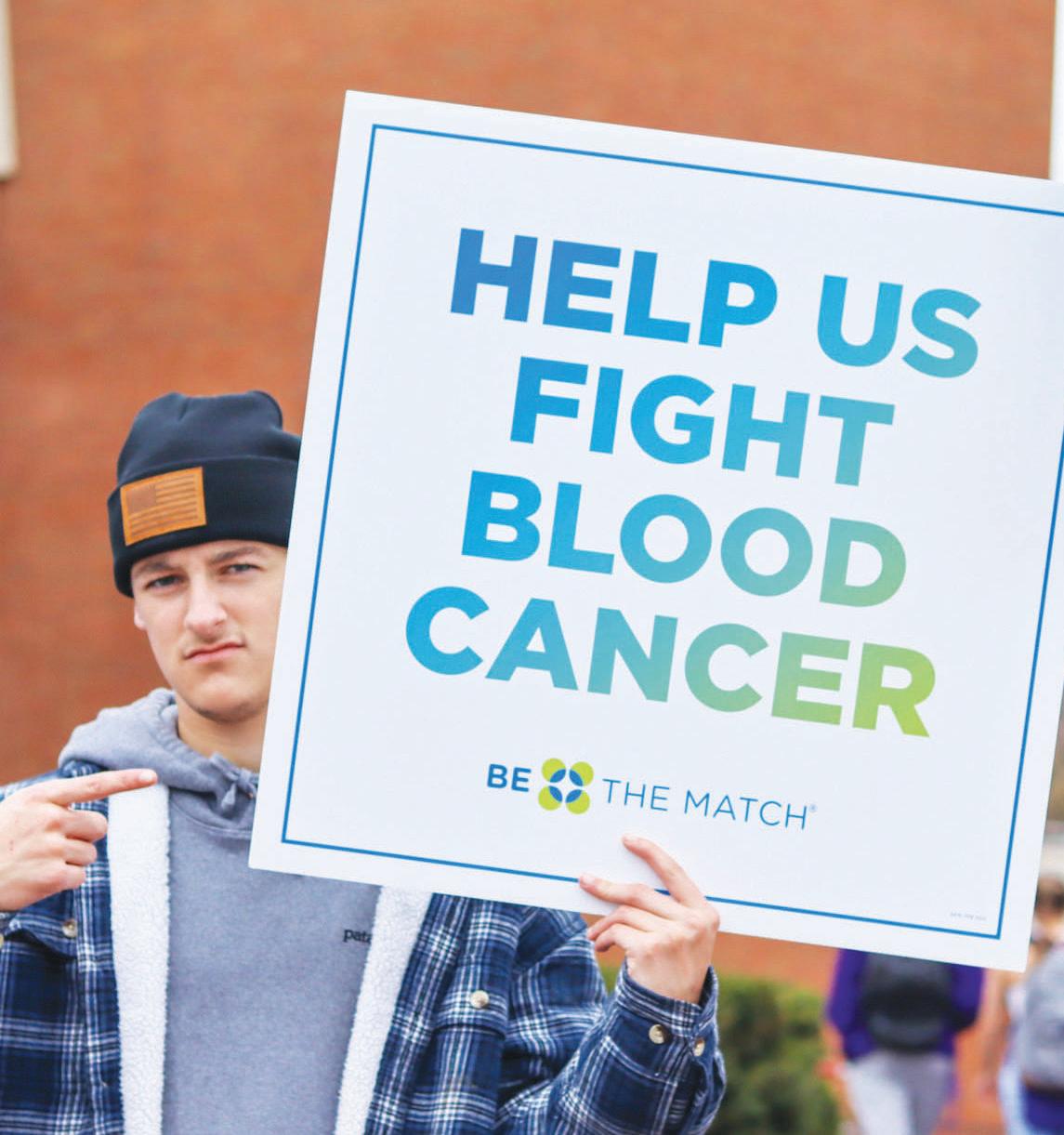

MISSION
The Breeze, the student-run newspaper of James Madison University, serves student, faculty and staff readership by reporting news involving the campus and local community. The Breeze strives to be impartial and fair in its reporting and firmly believes in First Amendment rights.
Published on Thursday mornings, The Breeze is distributed throughout James Madison University and the local Harrisonburg community. Single copies of The Breeze are distributed free of charge. Additional copies are available for 50 cents by contacting our business office. Comments and complaints should be addressed to Charlotte Matherly, editor.
from

Worldwide impact
Protests in Iran affects local residents with family ties
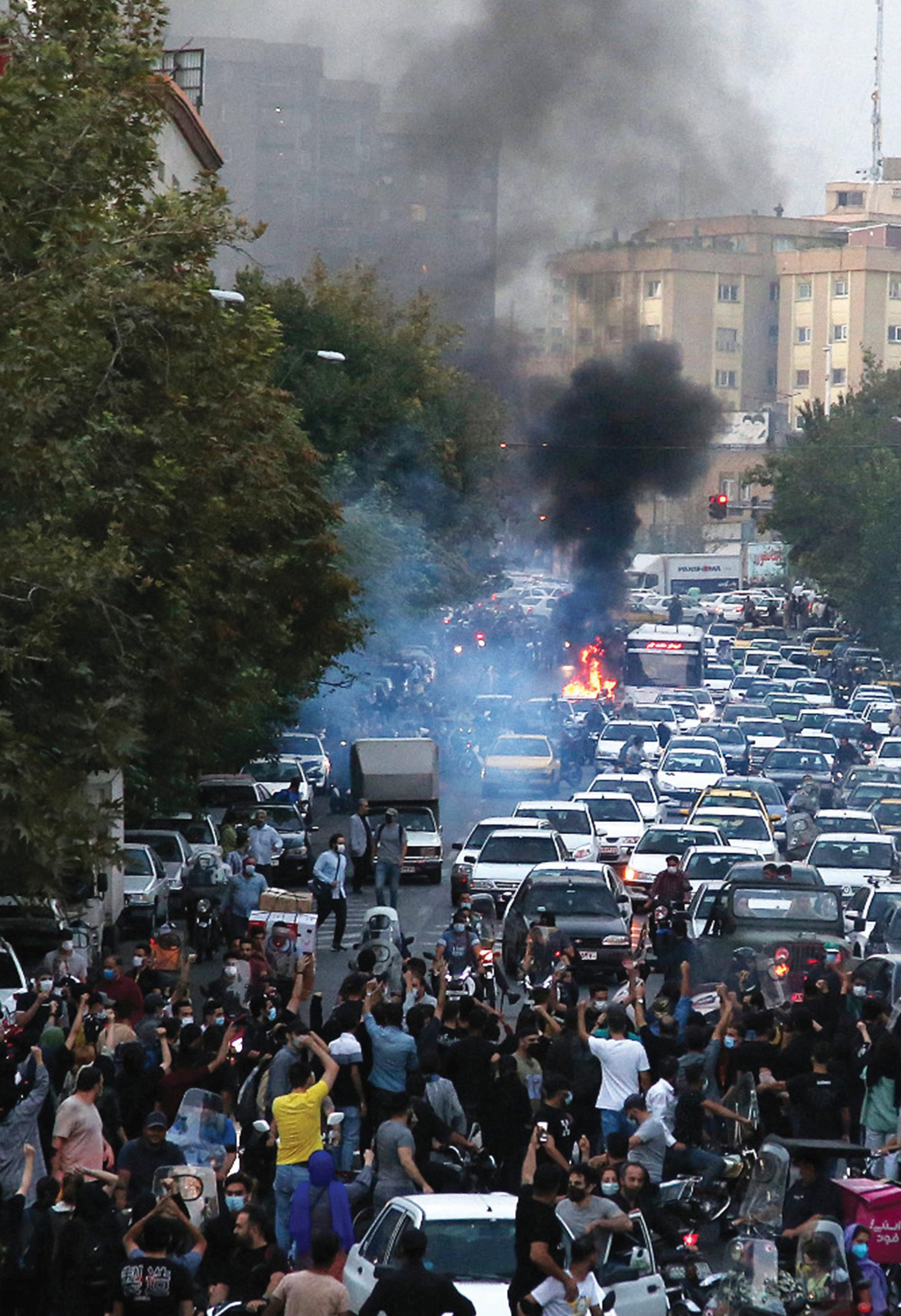 PROTESTS,
PROTESTS,
page 1
“We get sell, and this is not only now happening, that’s for whole our life was that I seen that which, is a lot of women, they couldn’t see it because they stuck there. The way they raised … they think this is it … If they are really good woman, they don’t have any hair out and their body doesn’t show and they will never talk. Maybe in heaven, God will forgive them and you can go to the heaven — maybe, not 100%,” Dadkosh said. “You can say nothing to this regime, and they would never be there to help you … They think they mix the religion … with their power.”
Kaussler said the Islamic Republic of Iran has “dual character” that has democratic, authoritarian and Islamic governance elements. He also said the younger generations, mainly Gen Z, don’t remember a time before living under the Islamic Republic rule.
“I feel like social media helped our generation in Iran really understand what they were missing, what they wanted to be a part of, to how they pictured their lives,” Seif said. “I mean, it was all on their phones, and then they wake up to their own reality, and it was like, ‘All right, you have to follow all these morality laws.’ And I’m really proud of them … They have a lot of courage and bravery.”
Kaussler explained that the Islamic Revolution of 1979 took “six months of concentrated strikes [and] protests” to break the monarchy that had been around for twoand-a-half centuries. A majority of people wanted to get rid of the monarchy rather than have an Islamic Republic. Liberal democrats, communists and socialists were all part of the strikes and protests that followed suit.
“Many scholars and students of Iran sort of see the parallels to ’79 and see these revolutionary forces which want to topple what they consider their authority,” Kaussler said. “The government in Iran thinks back of ’79, and they view themselves as the true revolutionaries … They like to view themselves as the anti-imperialist anti-status quo power, but now people are in the streets and trying to do the same to them,” Kaussler said.
When the monarchy fell in 1979, he said, the Islamic revolutionaries were “very keen on making sure that they wouldn’t share power.” He said they were castaway, killed, or subdued and from it came the Islamic Republic and also the Revolutionary Guard Corps whose job it was to make sure that the Islamic Republic “would not suffer the same fate as the monarchy.”
After the shift in governmental power, Kaussler said, Ayatollah Ali Khamenei, the Supreme Leader, holds most of the power as he oversees the armed forces and the appointment of the judiciary. These positions answer only to the Supreme Leader, which Khamenei said “defeats the purpose of a
democratic checks and balance.” Kaussler said the policies implemented after the revolution were restrictive for women, causing women who wanted to be more independent — like Dadkosh — to struggle in Iran.
“I was the Kurdish girl with a lot of dreams I had and I couldn’t say,” Dadkosh said. “I
couldn’t stay there and achieving my dreams … You can’t have your hair out, you can’t have the dress that you like to show in some of your body … You need to be somebody else. You need to be somebody that how they, how they picture, woman. They don’t see you. You are nothing. You just build up for getting married,
having some kids and taking care of all this stuff happening.”
JMU students, like Student Body President Shawdee Bakhtiari and Seif, who have connections to Iran, acknowledge that this is a historic moment for the country but said they feel disconnected because they live on the other side of the world.
“Obviously, I have a personal stake in the fact that I am Iranian, and that does mean something to me, but I think in that sense of kind of being displaced from the actual environment,” Bakhtiari said.
Seif said the time differences play a big part in knowing what’s going on with her family because Iran eight-and-a-half hours ahead, so the information she does learn is old.
“I think the hardest thing has been the lack of information, because as far as listening to any news channels, whether they’re Iranian or not, they’re usually behind, like they’re delayed at least by a day,” Seif said.
Bakhtiari said she’s “desensitized” to these types of events because they’re always happening. For instance, she said when Iranian officials “turn off the internet,” she’s aware of it because her family in the U.S. can’t reach her family in Iran.
“It’s something that I’ve just grown up with … I’m just happy to be able to have the connections to know what they’re going through and, like, how they’re handling it,” Bakhtiari said. “I kind of compare it to like, when there were a lot of protests here in America … I have any type of like, natural concern, but I don’t feel like I have this, like, heightened fear monger type of concern, ift that makes sense.”
Democracy Fellows at JMU’s Madison Center for Civic Engagement, Adrik Bagdasarian and Jason Whitted, said it’s important for people to have conversations about what’s going on in different countries like Iran. Bagdasarian is also part of the Woodson Martin Immigration and Democracy Initiative, which educates people on issues facing marginalized and immigrant communities, compared what’s happening in Iran to the suffrage movement in the U.S.
“[Iran is] under a government that has rules that oppresses them, and doesn’t give them civic rights and human rights,” Bagdasarian said. “There’s a very clear parallel to the suffrage movement we had in our own country. I think it’s really important for college students — young people — to know about this, because it’s something that has faced our country and is now facing another country.”
Whitted said it’s important to know about these events to better understand JMU’s diverse community, especially in Harrisonburg, which he said is a sanctuary city. Harrisonburg is also a refugee resettlement area that provides multiple resources for immigrants.
“I think it’s especially important to focus on what’s going on across the world because the city is directly impacted by the awful things that happened in other places,” Whitted said. “A lot of asylum seekers come to Harrisonburg, a lot of immigrants come to Harrisonburg. I think we should try to have an understanding of where they’re coming from, so we can have a better understanding of our community.”
While agreeing that this is an important issue students should be informed on, Bakhtiari said when many students aren’t directly affected, it’s hard for them to be cognizant of the situation.
“You have to take with a grain of salt that, like, as you know, in this society, when things are not pertinent to you, it’s not always going to be something that you’re thinking about,” Bakhtiari said. “I do think that it’s very important because these types of things are very central to the culture of what it means to be a universityaged student.”
Although news of these protests has died down in recent weeks, events such as the World Cup and other sporting events with Iranian citizens have shined the spotlight on the country — from the Iranian soccer team protesting by not singing the national anthem before its match in Qatar to Elnaz Rekabi’s hijab falling off during her climbing competition in South Korea, which was “inadvertent,” according to BBC.
blackout in Iran, also reported by BBC, which has reduced the number of videos that have been put on social media. People have to dig on different platforms to know what’s going on in the country. Kaussler said this may be to take the focus off of what’s happening in the country. Seif also mentioned that in her experience, when calling relatives in Iran, the call will drop if some key words like “protest” or “gun violence” are spoken.
“The greatest gift to the [Iranian] government will be that people would lose interest in the West and nobody’s talking about it,” Kaussler said. “They’re certainly hoping that this would happen, that with most things people tend to lose interest as it drags on. We’ve seen that with Ukraine and Russia and the American public. That solidarity always has an expiration date.”
Even so, Bakhtiari said it’s still impressive how far the news was able to reach and that she still sees updates and posts pop up on social media.
“The fact that it lasted as long as it did, I was like, ‘Wow … honestly, that’s pretty impressive,’” Bakhtiari said. “I think that was kind of interesting, like the longevity in and of itself. Like, of course, I was disappointed for it to lose traction, but the longevity really impressed me.”
With Iran’s Attorney General saying the morality police “have been shut down from where they were set up,” Bakhtiari said she
‘A dedicated space’
J MU introduces new Center for First-Generation Students
By BRIANNA THWEATT The BreezeJMU’s Center for FirstGeneration Students opened on Nov. 7. Located in the Student Success Center (SSC), it’s the first on-campus center of its kind for first-generation students.

“A dedicated space allows for engagement and encouragement,” Donna Harper, vice president of Access and Enrollment Management, said in an email to The Breeze. “First-generation students have unique backgrounds that JMU can support with appropriate resources and connections to foster their success at JMU.”
First-generation, or first-gen, students are college students whose parents or guardians didn’t graduate from a four-year institution, despite any other family member’s level of education, according to the Center’s Instagram page.
Delnia Dadkosh Owner of Dlnia Hair Salon“A lot of people my age right now have been paying attention to what’s been happening with the soccer players on Iran’s national team and how there’s been pushback by the Iranian regime against their refusal to sing the national anthem,” Whitted said. “I think that’s kind of exposed a lot of people to these issues that normally wouldn’t have an understanding of them.”
It’s been speculated that the Iranian soccer team will receive a punishment of some kind and Rekabi already has, according to BBC, which reported that Rekabi was forced to apologize.
Kaussler said free speech in the U.S. isn’t a luxury Iranians have.
“I think the greatest gift the West can give to people of Iran who are demanding human rights and democracy is to advocate for them and be their voice,” Kaussler said. “We all in the United States and Europe tend to take these protests and demonstrations of free speech for granted. But it’s not the case for somebody to go out in the street without a job as a woman and protest against the government, protest against human rights violations, go outside prisons, demand for the prisons to open and for them to release the incarcerated protesters. This is an incredible amount of courage. It’s really unseen … in the recent history of the Middle East.”
News of these protests isn’t circulating as much as it did a few weeks ago, Seif said.
“It’s a very accurate way to describe everything and anything on social media, you know, it pops up. It’s a trend, it’s a, it’s a fad, and then it’s gone,” Seif said. “And I think it did its job of spreading awareness to the point that now, if you mentioned an update, people will know.”
Kaussler said there’s currently a media
believes this is a move the government is making to hopefully “dampen the protests.”
“I think that this is something that has even jarred the regime … I think that this is kind of like a cat and mouse game, almost of like, giving a little to get a little,” Bakhtiari said. “I think that it’s a very interesting move, I think it probably comes a lot from the pressure.”
Seif said she doesn’t want the disbanding of the morality police to “encourage the people to stop protesting.” It’s just a temporary fix, she said, put in place to distract from the bigger picture.
“That’s not going to change the culture of the government and of what’s going on, it’s not going to help, and I think they need to keep pushing for Iran,” Seif said. “I think it’s really just the government trying to bribe the people. Give them something just like, like a little treat to get them to stop, which I think is so demeaning.”
Seif said seeing the amount of damage that’s taken place is “devastating” but that “a healing has already started.”
Even so, that damage from across the world can reach community members in Harrisonburg.
One Iranian person who The Breeze asked to speak to for this story said they couldn’t do the interview, even if it was anonymous, because they had family still in Iran — any publicity with their name attached, they said, could put their family’s safety at risk.
CONTACT Shirin Zia Faqiri at breezepress@ gmail.com. For more coverage of JMU and Harrisonburg news, follow the news desk on Twitter at @BreezeNewsJMU.
Unlike the typical college student, first-gen students face numerous obstacles other than just deciding which college to attend, including guilt for leaving their friends and family behind, embarrassment for being the first person within their family to achieve a higher education and anxiety over tuition and class schedules, according to The Clay Center, an organization that’s “dedicated to promoting and supporting the mental, emotional and behavioral well-being of all young people.”
In 2022-23, about 12% — 2,391 — of undergraduates at JMU are first-gen students, according to a JMU press release. There are 20,346 undergraduate students enrolled in JMU as of fall 2022, according to JMU’s website.
Though creating and opening the Center has been a long process, Harper said it was a process that students were looking forward to. With the involvement of the Student Affairs Administrators in Higher Education (NASPA) and the ability to visit other institutions with established spaces devoted to first-gen students, Harper said JMU took its plans to the next step. In collaborating with JMU’s Student Affairs, JMU was able to find ideally close proximity to the Centennial Scholars Office in SSC. The Centennial Scholars Office aids in relieving financial difficulty while also providing a system of support for students who may be underrepresented.
Harper said there was no cost for the creation of the Center because its room was already a part of SSC.
Once constructed, the Center hosted its first open house on Nov. 10 with refreshments and open conversation. All JMU community members were welcome, including first-gen students and faculty and staff.
Since the Center’s opening, many first-gen students, like junior writing, rhetoric and technical communication (WRTC) major Vanessa Martinez and freshman psychology major Ayvah Wolverton have consistently gone to the Center, both as a quiet place to relax and do school work.
“I like this lounge because it’s very inclusive,” Martinez said. “It’s nice to be in a place or a lounge where you have first-time college students just like you.”
The Center isn’t restricted to first-gen students — it’s an open space for the whole JMU community.
Though the purpose of the Center is to make space for first-gen students on campus, its doors are open for any newcomers who need a quiet place to do their work or take a breather.
The Center offers resources such as printing, snacks, an affirmation wall and help from other departments, such as Centennial Scholars, located next door.
“Every time I’ve come in here, there are always people in here — whether it’s someone else on their laptop or heating up their food,” Martinez said.
Junior first-gen student Janaiya Hill, a biology major on the pre-med track, was one of the few to see the Center go from an empty room of cubicles transformed into a lounging space for the community, as she was part of the early planning of the Center and now works there. Hill, who’s a member of Torch —the first-gen society on campus — was one of the first to know about the developments of the Center.
“When I came to JMU, I didn’t even know that I was a first-generation student,” Hill said. “I didn’t even know what it meant until not too long ago. It was hard for me to find a community that I belonged to because at the time I didn’t even realize what that was. ”
While the Center may still be new to campus, Harper said its importance will last for years to come.
“We anticipate having a designated space for first-generation students will demonstrate our commitment to their involvement and success,” Harper said. “Programs, activities, events and quiet space will support first-generation students and their involvement, success and contributions at JMU.”
Hill agreed, acknowledging the Center as a place where, regardless of race, culture and identity, there are shared financial struggles among everyone, “and that’s OK,” she said.
“JMU doesn’t do a good enough job of saying that you are a first-gen student and reaching out and providing resources,” Hill said, “but this lounge is a start for students now and for future students to come.”
In regard to Hill’s comment about JMU not providing enough resources for first-gen students, The Breeze reached out to JMU Communications for a comment from the university, which directed The Breeze to a press release about the Center.
CONTACT BriAnna Thweatt at thweatbf@ dukes.jmu.edu. For more coverage of JMU and Harrisonburg news, follow the news desk on Twitter @BreezeNewsJMU.
“You can say nothing to this regime, and they would never be there to help you.”
A helpful hand
Local non profit works to “creatively counteract” human trafficking
By SARAH ECCLESTON The BreezeNew Creation, a non profit organization that works to combat human trafficking by creating work for survivors of human trafficking or those vulnerable to it, boasts an array of products — dish towels, candles, coffee, dolls, jewelry and scrunchies. But Sabrina DormanAndrew, co-founder and executive director of New Creation, doesn’t just see products; she sees stories, a different history for every product.
Everything New Creation sells was either made by a survivor of human trafficking or is fair trade. Their merchandise comes from around the world, Dorman-Andrew said, from Maryland, to Moldova, to Ohio, to Mexico, to India — the list goes on. According to its website, New Creation works to “creatively counteract human trafficking” and 100% of its profits go toward that mission.
Dorman-Andrew started the nonprofit with her husband, Steve Andrew. Dorman-Andrew said the couple didn’t have any experience with nonprofits before. Their interest in human trafficking advocacy began when they realized not many people in the U.S. discussed the issue — especially human trafficking in the U.S. — and they wanted to take action.
Dorman-Andrew said she and her husband began their research by talking to organizations that help prevent human trafficking. When the couple first started their journey, they connected with FreeKind — an organization based in Richmond that created the Prevention Project curriculum that New Creation now helps fund and implement in schools. Many of the organizations the couple worked with when starting their journey have since been dissolved.
“It points to the challenges and difficulties of working in this space,” Dorman-Andrew said. “Most people have no idea just how overwhelming it is trying to battle back trafficking.”
They also sat in on law enforcement trainings on sex trafficking — given by WellSpring Living, Shared Hope International, the Department of Criminal Justice, Safe House Project and International Justice Missions, to name a few — to gauge what the biggest issues were concerning human trafficking and what was needed locally to help combat the issue: jobs and public education, she said.
“It led my husband and I to really think about, ‘Is this happening in our community? What does this look like in the U.S?’” DormanAndrew said.
According to the National Human Trafficking Hotline, the International Labour Organization estimated that there were 40.3 million victims of human trafficking globally in 2021, with hundreds of thousands in the U.S. In Virginia, 6,352 victims of human trafficking were reported in 2020, according to National Human Trafficking Hotline.
The journey
At first, the couple sold products out of their home, starting in 2012 with paper bead bracelets made by women who escaped human trafficking in Uganda. They sold the products and sent the profits back to the Ugandan women.
But in 2014, wanting to do more, the couple purchased a storefront
on South Main Street in Harrisonburg. Dorman-Andrew said it was previously a porn shop that had been sitting empty for years.
“We were very specific to want to take this property over because of its history, and we saw what its future could be,” Dorman-Andrew said.
The property cost $80,000, she said, which the couple didn’t have. So, they spoke to their church and told them that New Creation was what they felt “called to do.” The couple asked for donations to help start the nonprofit, which enabled them to buy the property within 30 days.
“I think that’s always been the foundation of New Creation,” Dorman-Andrew said. “It’s not always about us or our team. It’s been the community stepping in and standing with us. So, from the onset of New Creation, it’s been a community effort to do it, and I think that’s always kept people engaged.”
She and her husband initially expected renovations to take six to eight weeks, but it ended up taking about 14 months because the building needed a lot more renovations than expected. Over that time, Dorman-Andrew said hundreds of volunteers stepped up and helped complete the construction.
Now, Dorman-Andrew said New Creation works in “two lanes” to combat human trafficking. Globally, New Creation works with 60 artisan groups to create jobs for those affected by human trafficking and those vulnerable. According to its website, 80% of those rescued from human trafficking are re-trafficked if they lack employment. Locally, New Creation works on educating the community to raise awareness and educate students about human trafficking.
Dorman-Andrew said what’s really important about New Creation is the way it makes people come close to a difficult issue.
“When we first started talking about the issue of human trafficking, people would just shut down,” Dorman-Andrew said. “It’s paralyzing, it’s scary, the statistics are hard. It’s the fastest growing criminal industry. People want to keep it at bay … There’s days I wish I didn’t know the things that I know.”
Since Nov. 29, a new mural painted on a shipping container behind the store reads “Looking Good World Changer.” The mural can be seen from busy South Main Street and was meant to gain passersby’s interest, Dorman-Andrew said.
Before the pandemic, New Creation had a spot in Agora Downtown Market. Dorman-Andrew said the spot was helpful for getting customers familiar with New Creation’s message and products while directing customers to its main storefront on South Main. During the pandemic, though, New Creation was unable to support the Agora location. Now, Dorman-Andrew said she hopes the mural will bring in customers.
“We thought it would be a great way to, kind of, beautify this area of town that’s all car lots and so forth,” Mandy Lawson, communications director at New Creation, said.
Dorman-Andrew said she came up with the message to show love to New Creation’s customers and let them know that they’re “changing the world” by showing support to the business.
“I wanna use it as an art installation,’’ Dorman-Andrew said. “I wanna use it as a way we can love our community.”
To execute her vision for the mural, Dorman-Andrew hired Jimmy Bruce, owner of Age Old Sign Co., who regularly paints signs for businesses. Bruce, who said he painted New Creation’s sign for the outside of the store prior to the mural, has been a Shenandoah Valley local since 2007 and has painted signs for many businesses in the Harrisonburg area, including Golden Pony, Ruby’s and Water Street Vintage & Bohemian.
To secure the funds to pay for the mural, Dorman-Andrew said New Creation looked to the Arts Council of the Valley (ACV), a nonprofit organization dedicated to cultivating the arts in the Shenandoah Valley. ACV gave out “Creative Inspiration” grants for the fall 2022 funding cycle to advance community-based initiatives in Harrisonburg and Rockingham County, according to an ACV press release.
ACV gave the grant to New Creation to create “a fun social media destination for the nonprofit.” The grant was given to seven recipients, totaling $9,200, according to the press release.
The shipping container is not only an art installation, but inside are wholesale products that New Creation sells to over 80 businesses across the U.S. New Creation sells products from established organizations such as Women’s Bean Project, Hon’s Honey, Prodigal Pottery and Hope’s Landing.
However, some of New Creation’s merchandise comes to the storefront directly from the makers. Women in Chisinau, Moldova, make dog bow ties and bandanas, “Daydream” dolls, headbands, scrunchies and many other products for New Creation. DormanAndrew said one in 10 women in Moldova are trafficked, so she felt it was important that New Creation partner with them.
“We realized if we can’t sell more products, there are women who don’t have jobs,” Dorman-Andrew said.
The need for the Moldovan women’s product base to expand came with the pandemic. She said when New Creation was the only market in the U.S. for the Moldovan women’s products, it wasn’t providing them enough income to support themselves and their families. Since adding wholesale New Creation has grossed over $50,000 a year for the women in Moldova.
“We jumped in in desperation because we had women dependent on us,” Dorman-Andrew said.
In addition, New Creation created a subscription box to help bring money to the women by featuring their products.

Since the Russia-Ukraine war broke out in March, Ukrainian refugees flocked to Moldova. So, the last couple of batches of Moldovan products have in part come from Ukrainian refugees living in Moldova. New Creation passed $30,000 in funds to help meet the needs of the refugees in the organization they partner with in Moldova.
“It was really amazing for me to see we were there on the ground being able to provide a need before we even knew it was coming and so that’s been really powerful,” Dorman-Andrew said.
CONTACT Sarah Eccleston at ecclessk@dukes.jmu.edu. For more coverage of JMU and Harrisonburg news, follow the news desk on Twitter @BreezeNewsJMU.
Supporting the fight
JMU Sigma Nu brothers raise money for president diagnosed with non-Hodgkin’s lymphoma
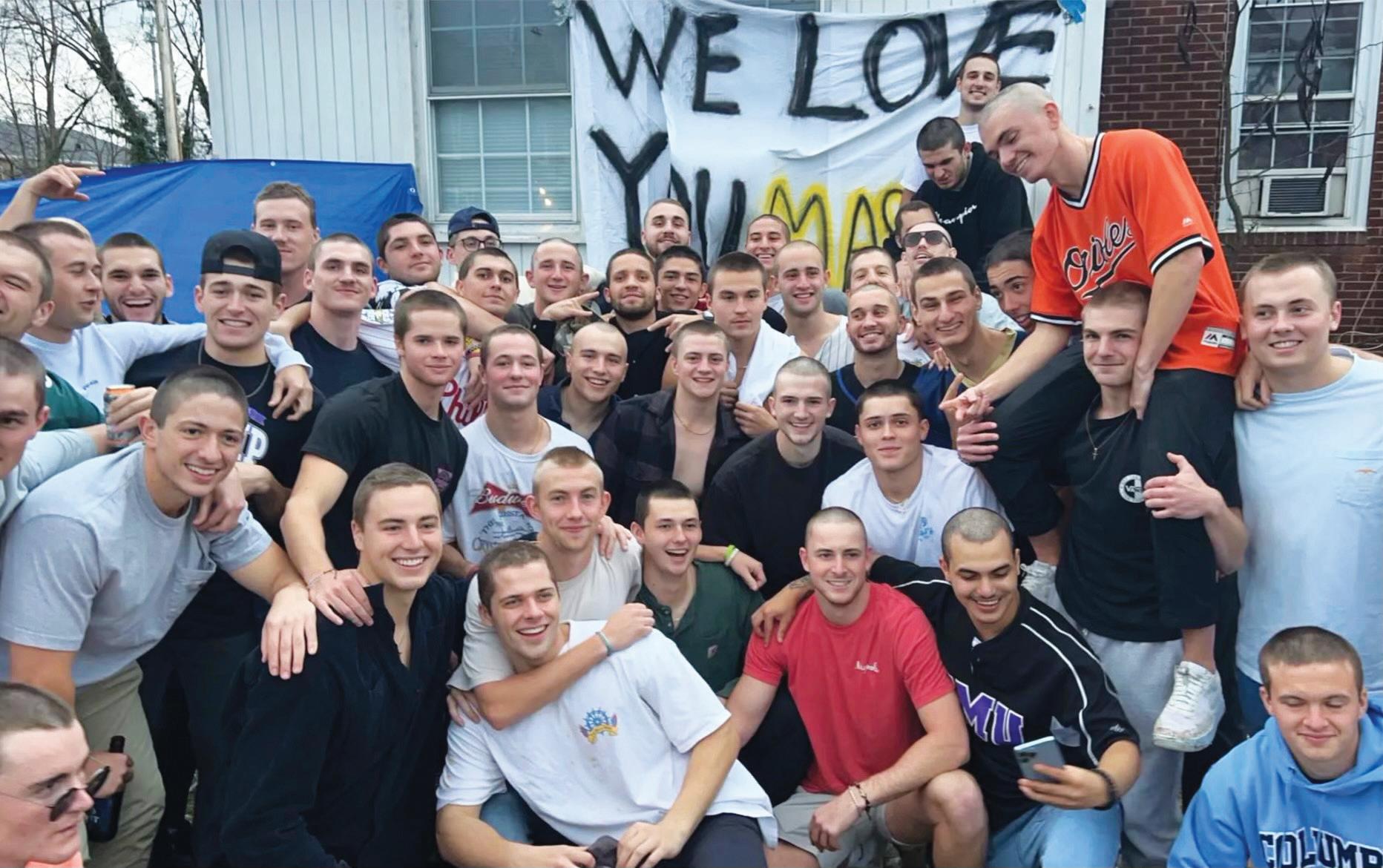 By ASHLEE THOMPSON The Breeze
By ASHLEE THOMPSON The Breeze
Mason Walczak’s life changed after he was diagnosed with non-Hodgkin’s lymphoma in the early fall. To show support for Walczak, a JMU senior and Sigma Nu Iota Delta chapter president, his fraternity brothers are hosting a number of fundraising events to raise money and awareness for cancers like non-Hodgkin’s lymphoma.
According to the Mayo Health Clinic, nonHodgkin’s lymphoma is a type of cancer in which lymphocytes, or white blood cells, grow abnormally and form growths in the body. Typically, lymphocytes grow and die like any other cell, but with non-Hodgkin’s lymphoma, that doesn’t happen and the body keeps creating more. This overabundance of lymphocytes crowds the lymph nodes and causes them to swell.
Zachary Smith, junior and brother of Sigma Nu, organized a GoFundMe for Walczak on Nov. 4 — as of Dec. 7, the cause had reached nearly $38,000 in donations. In the description for the GoFundMe, Smith describes Walczak as charismatic, reliable, caring and an “essential member of our fraternity.”
To spread the word about Walczak to the community, Tim Miller, JMU’s vice president for Student Affairs, posted about Walczak on his Instagram, which led to many others sharing his story and donating to the GoFundMe, Christopher Fontana, a senior and brother of Sigma Nu, said.
“Support Mason!” Miller wrote in the post’s caption, followed by a link to Walczak’s GoFundMe. The post received over 1,000 likes.
Fontana and Alec Sbily, senior and brother of Sigma Nu, told The Breeze about a recent fundraiser with another fraternity on campus, Pi Kappa Alpha, on Nov. 13. Many members from both fraternities shaved their heads and each donated $10 to Walczak’s GoFundMe. The exact amount of money raised is unclear due to a flood of donations coming in from multiple platforms, including in-person donations, the GoFundMe and Instagram Live.
“[Mason] texted us later that day and was so thankful,” Sbily said. “He couldn’t believe that we actually did that for him.”
To grow support and donations, Fontana said Sigma Nu has green rubber bracelets that read “Mason Strong” and “Nobody Fights Alone” that cost $5. Fontana said they’ve sold roughly 350 bracelets, with around $1,750 raised. Sigma Nu has around 650 bracelets left for sale.
“All of the proceeds [for the bracelets] will go directly to Mason and his family,” James Townsend, senior vice president of Sigma Nu, said.
Townsend said Sigma Nu hosted a fundraiser dinner at Benny Sorrentino’s on Dec. 1, with all of the proceeds going to the Walczak family. Around 120 people showed up to the event, Fontana said.
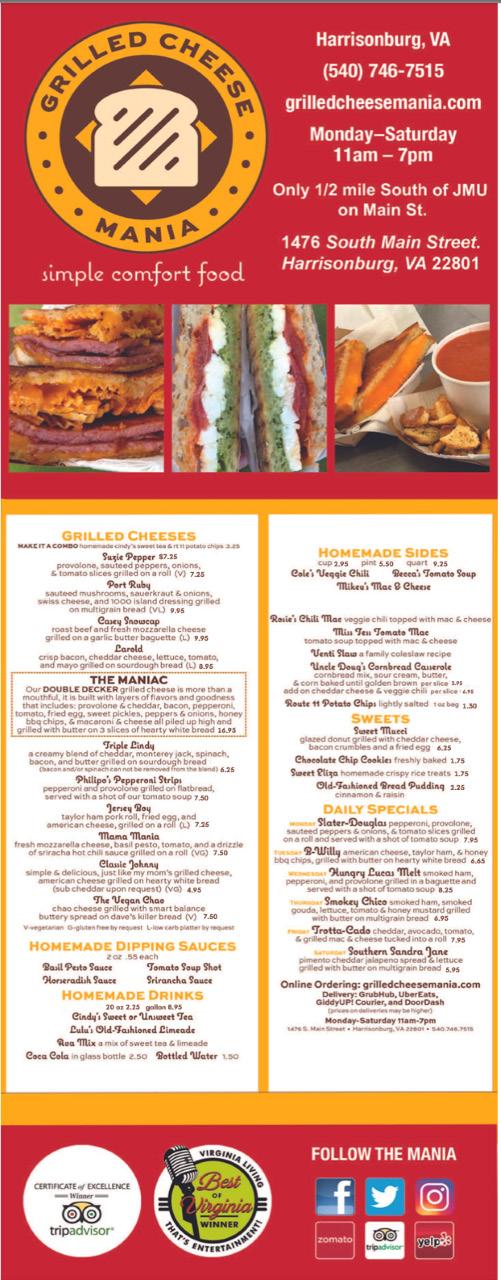
Sigma Nu is also partnering with Be The Match, a non profit organization operated by the National Marrow Donor Program (NMDP) that helps blood cancer patients get life-saving transplants, according to its site. Non-Hodgkin’s lymphoma, as is typical with blood cancer, affects patients’ bone marrow — a sponge-like material in the middle of bones where most cells develop, according to Johns Hopkins.
Fontana said although being a bone marrow stem cell donor is rare, that isn’t stopping Sigma Nu. On Dec. 5, the fraternity hosted a drive to test students to see if they could be a bone marrow donor.
“The testing sites went very well. We had a great turnout,” Fontana wrote in an email. Sigma Nu and Be The Match tested roughly 100 people on campus.
On Dec. 7, the fraternity will be collaborating with Be The Match again to continue testing volunteer students as potential donors. The testing centers will be open from 11 a.m. to 2 p.m. outside of D-Hall.
“If someone is a donor, they would volunteer to undergo a completely free bone marrow transplant to essentially save someone’s life,” Fontana said.
Although the support can get overwhelming, Walczak’s friends said he’s appreciative of everything the community has done for him. Townsend said Walczak gets comfort in the fact that his “home away from home” is supporting him.
As president of Sigma Nu and a member of JMU’s club lacrosse, Sbily and Smith said Walczak is seen as a role model with many people following his example.
“His athletic ability mixed with his kind heart makes him stand out amongst most,” Smith wrote in the GoFundMe description, “and we have no doubt in his ability to beat cancer.”
CONTACT Ashlee Thomspon at thomp6ab@ dukes.jmu.edu. For more coverage of JMU and Harrisonburg news, follow the news desk on Twitter @BreezeNewsJMU.
Powerful voices Powerful voices
Student art exhibit showcases stories of sexual assault survivors
 By K. MAUSER contributing writer
By K. MAUSER contributing writer

Sexual assault survivors, JMU students, city council members and Staunton, Virginia, residents entered the lobby of the New Directions Center to view the work of JMU communications and art students the evening of Nov. 30. The “somber” art on display featuring survivors’ stories moved some of the crowd to tears, Justin Lingenfelter (’15), the center’s director of program development, said.
The New Directions Center was established in 2015 to advocate for survivors of sexual and domestic abuse. Toni Whitfield, JMU communications professor, said she was able to partner with survivors connected to the New Directions Center as the foundation for her most recent student-led communications project: creating an exhibit that spread awareness surrounding sexual assault and domestic violence.
“I just always thought it would be great to collect stories of survivors of domestic abuse,” Whitfield said. “Well, they’re all very tragic stories, but they’re also stories of survivorship, right? So, it’s not just that horrible things happen to these women but that they’ve overcome it.”
Whitfield and her class, SCOM 350: Organizational Communication, joined forces with Corinne Diop, a JMU art professor, and her ART 360: Intermediate Photography class to display different survivors’ stories at the New Directions Center.
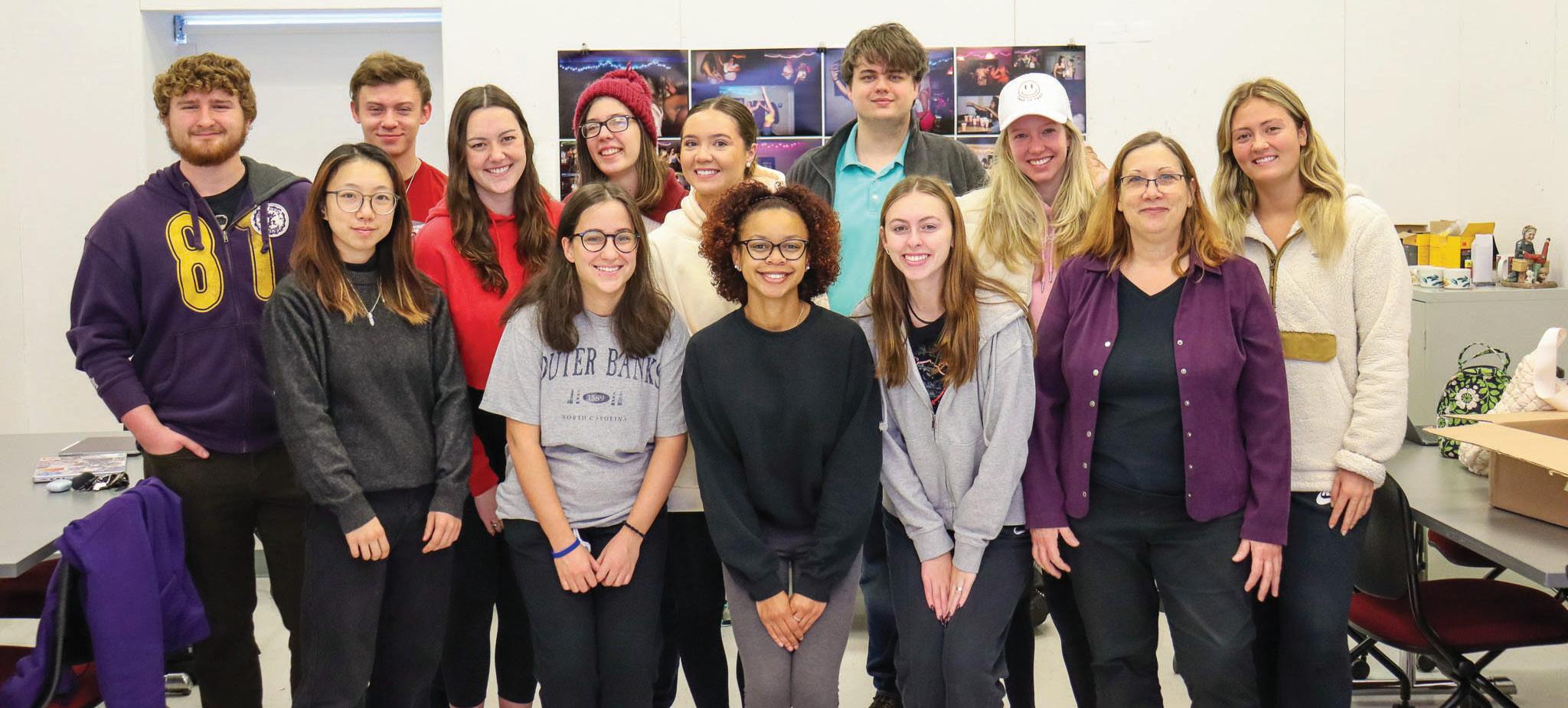
“Oh, it was absolutely worth it,” Whitfield said about how working with another JMU discipline was worth the difficulty she had to overcome.
Through the collaboration between both classes, the group created 14 pieces of photography that are all available for bidding on the online gallery, “Powerful Voices: Stories of Survivors.” Each piece of art depicts a story that was collected from a survivor and
transformed by a JMU student into their own piece. Lingenfelter said all the money collected from the sales of the art will directly fund the center’s variety of services, which includes counseling and an emergency hotline.
Students in Whitfield’s class worked together to analyze communication practices using communication theory, which studies how living beings relate and communicate with one another. Whitfield split her class into six different sections to organize the event: story collection, art sales, art liaisons, logistics, in-kind giving and promotions.
“I always include an experiential component and almost always a service learning component so that we’re doing something for a nonprofit,” Whitfield said. “This is the first time I did one client for the entire class — we usually have multiple projects.”
Diop said she was eager to help with Whitfield’s project upon first receiving the offer. The professor received stories from a handful of survivors that inspired the artwork each student created, Diop said.
Although the finished products were all based on the survivors’ stories, each photography student was able to take their own ideas and implement them creatively into their pieces.
“With digital photography, what I love is there’s so much you can do,” Diop said. “I think that the medium was flexible enough that you could take this topic and go a lot of different directions based on inspiration.”
Diop said some of the students did stage presentations with a model, lighting and props while others used Photoshop to blend individual images into something new.
“They kind of understood what the [New Directions] Center stood for and what their missions were,” Diop said. “They really emphasize hopefulness.”
One of the pieces, “Untitled,” by senior JMU student artist Kaylie Schloemer, who’s pursuing a major in graphic design, depicts two
hands unfolding a flower in the center, as Diop described.
“In these photos, I wanted to encapsulate the moment of escape and the growth that takes place in every survivor’s story after they get out [of the abuse],” Schloemer wrote in the photo’s description. “It’s important for anyone in these dark moments to know that they can get out and they can outgrow this experience, to become someone amazing.”
The communications students who didn’t directly create the art in Whitfield’s class said they held the same level of respect for the art they were promoting.
“I think it’s definitely hard for people to talk about domestic violence and anything else that falls in that category,” Dylan McCarty, a senior communications major in the promotions group of the project, said. “I think the artists being able to bring alive … the stories from survivors that the other group was able to interview is really powerful.”
The students’ collective mission was to ensure that people have outlets to talk about traumatic events that they’ve gone through, McCarty added.
The success of this event speaks to the collaboration between multiple disciplines at JMU and raises a question of if working together departmentally will produce more successful results, Whitfield said.
“[The event] was successful in raising awareness … because it’s a ripple effect,” Whitfield said. “[My students and I] talked about that at the event the other night. We had so many different kinds of people connected through social media, through just the experience of coming and seeing the art or seeing the art on the link.”
Lingenfelter agreed and said a nearby shop owner came to bid on one of the pieces on display, and three of the 14 made have already been sold. Additionally, he said the exhibit could be triggering to some survivors, but it was a positive experience overall.
“It’s a great project to visually show and move people to the concept of domestic violence,” Lingenfelter said. “There’s so many different photographs out there that visually interpret domestic violence in so many different ways, and I think that can connect to people on different levels … I think spreading awareness is the critical piece to a project like that.”
Whitfield said based off this, she’s going to take on a similar project in her SCOM 350 class in the spring during sexual assault awareness month. McCarty also said the collaboration between different departments was important.
“I think what both classes really got out of it is trying to work together as a team and collaboratively putting together an event between two classes. That’s all we got out of it,” McCarty said. “And it’s something that could definitely be useful when it comes to a professional life outside of school.”
Michael Russo contributed to this report.
CONTACT K. Mauser at mauserkk@dukes.jmu.edu. For more on the culture, arts and lifestyle of the JMU and Harrisonburg communities, follow the culture desk on Twitter and Instagram @Breeze_Culture.
SMAD majors collaborate with student entrepreneurs for authentic professional experiences
By SABINE SOLTYS contributing writerAs School of Media Arts and Design (SMAD) professor Elisabeth Kvernen and Emily Myer, a junior SMAD major, would explain: everyone knows the secret to success in business, school and life is clear communication and strong collaboration. This semester, a SMAD partnership with the Gilliam Center for Entrepreneurship was no exception.
Starting in mid-October, SMAD students in Kvernen’s SMAD 332: Visual Communication Design class created a logo and other branding for businesses and products made by three different students at the Gilliam Center.
Kvernen first designed this collaboration in spring 2021. She said she was inspired by Jennifer PeeksMease, the College of Arts and Letters’ former community engagement liaison who worked to connect classes with community partners. In the past, students in this class had partnered with nonprofits to create their logos, but Kvernen looked to the Gilliam Center — there was only so much branding the other organizations could use.
“You have these students who are creating new products and services,” Kvernen said, “and we have these other students who are wanting to create a brand and a logo. So, this is kind of like an ongoing need for both sides, so it’s a great fit.”
Suzanne Bergmeister, the director of the Gilliam Center, helped with the recruitment of the Gilliam students. Bergmeister said in an email that she works with her leadership team at the Center to determine which of the student entrepreneurs would benefit most from the branding guide that the SMAD students are putting together. These students were then informed of the opportunity for collaboration, and if interested, they filled out a Google form specifying the product, its background and mission, what they had already and what they were looking for out of the partnership.
Kvernen echoed Bergmeister and said collaboration was a main component of the project throughout the entire process, from choosing the entrepreneurs to developing the students’ branding.
“I just work with the Gilliam Center, Suzanne and some of her staff to sort — because I know the students — who might be a good fit for this, who’s actually serious about pursuing this product and really … at the point where they can use a brand, and then we’ll sort of take on three or so each semester,” Kvernen said.
Julianne Pullela, a junior industrial design major, was chosen for her product, Tongo: an open-ended, 7-foot-long plush toy Pullela designed to help children express their creativity and to be used in an occupational therapy setting, she said.
In addition to Tongo, SMAD students collaborated this semester with RTS Outfitters, a type of heated vest, and Umberledge Games, a card game.
Hands-on learning
From mid-October to Thanksgiving, Pullela and the other student entrepreneurs met with the SMAD students to work on the project. The first time they came in, they explained their business and what they wanted.
“Some people wanted branding, or a website or an Instagram handle and stuff like that,” Pullela said. “I kind of just wanted whatever they wanted to give — mostly the logo.”
From there, the SMAD students picked which product or business they were most interested in and wanted to work with. Myer, with her partner Nick Lau, designed the logo for Pullela. Lau is a former opinion writer for The Breeze. To create this logo and branding, Myer said she and Lau first researched Tongo’s target audience of middle-class families and occupational therapists to come up with a brand guide.
Myer said a brand guide includes any and all
information a company needs for where and how to use a logo and its different iterations, as well as other branding components like fonts and colors that ensure consistency.
Myer and Lau also received critiques from Pullela along the way. They also made a business card and created a mockup for the toy’s packaging that had a see-through hole for kids to touch and feel the product. Myer said she drew inspiration from other fabric-based and wooden toys to design the mood board and logo.
“We wanted the logo to be quirky to reflect the toy but simple so that the kids could kind of understand it, but [also] simple in a kind of aesthetically pleasing way,” Myer said.
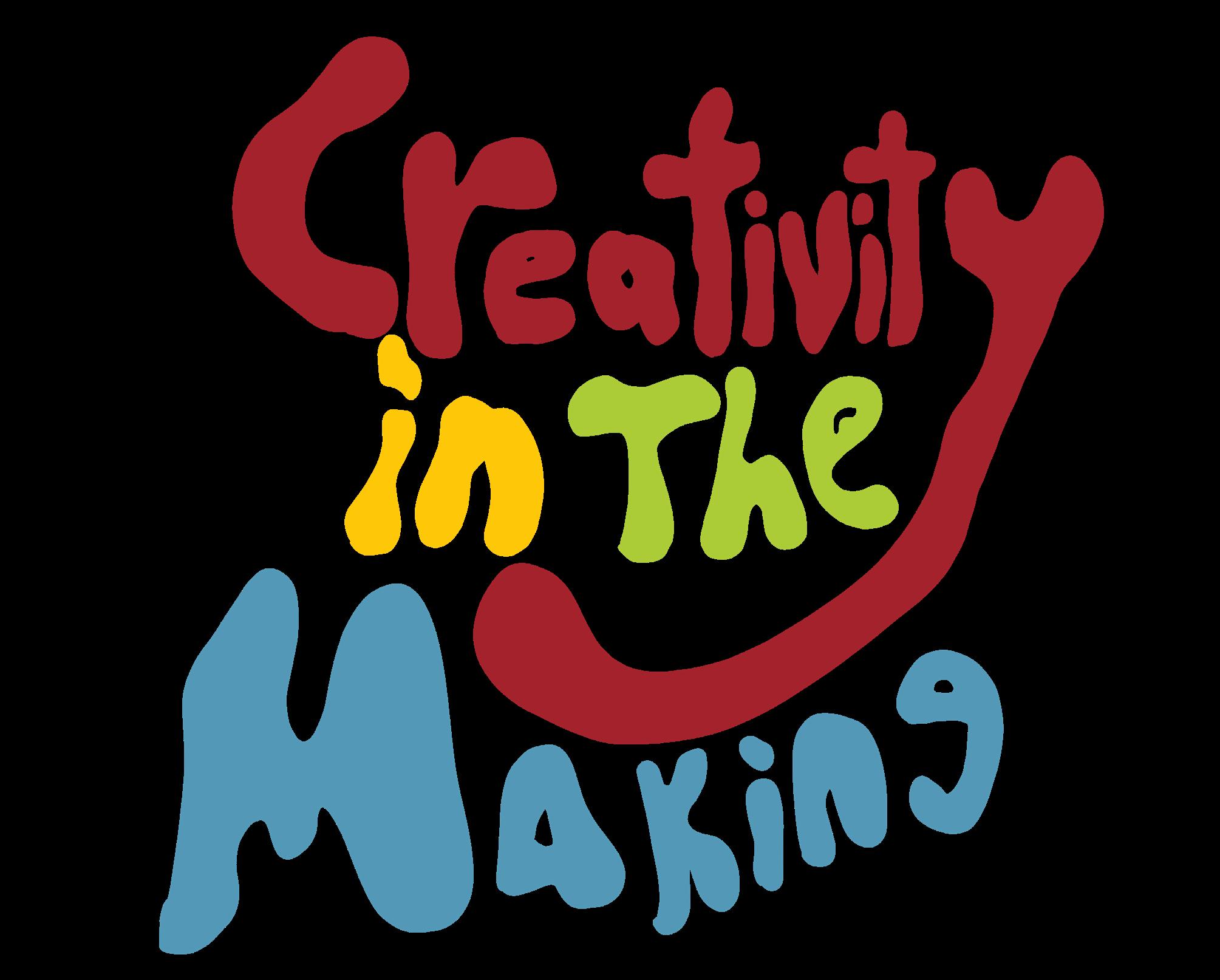
Myer said she found the overall process of keeping the uniqueness of the toy while maintaining simplicity challenging, but she said it was beneficial for future work that might come up later in her career.
“Working for a client is something very interesting and that teaches you a lot,” Myer said. “[By] having a real person to give you feedback, it gives it more realness because it’s like an actual person and their brand that you’re controlling. So, you are learning how to communicate with them so that you can figure out what they want and meet their needs but also still be successful in what you are trying to do as well. I think having a real-life client kind of changes your viewpoint on what you are making instead of it just being for a fake client in class.”
Myer and other SMAD students presented their logos and brand guides to the student entrepreneurs the week before Thanksgiving. Pullela got three different versions of logos and branding from the SMAD students. She said she hopes to use some of them in the future, maybe in upcoming competitions or promotions for her product.
“I learned how cool it is to rely on other
people with a different skill set because … everything for my business up to this point has come out of my own brain,” Pullela said. “To give them my idea and see where they ran with it has been kind of cool. It was really interesting to see their interpretation.”
Kvernen said the experiences that come from working for a client and developing real-life projects foster a beneficial learning opportunity for all students involved.
“I think that gives the SMAD students motivation to do it because they get to meet these student [entrepreneurs who] have these great ideas and are pursuing that independently of a class,” Kvernen said. “It’s inspiring because they come and they talk about their product and they show it, so then people get really into it.”
Kvernen also emphasized that she encourages her students and the entrepreneurs to think beyond the level of preferred styles and to focus more on how to communicate the company’s mission and values in the design.
Thanks to this project, Myer said she was able to think of design work more in-depth and from a new perspective as she worked with client that was physically present.
“SMAD can only teach so much in the classroom, and having someone real that you are making a product for gives you a whole new meaning on your design work,” Myer said. “I think you should have as much experience as you can when you graduate. People want to see you be creative, and I think this is a very unique way to do this.”
Michael Russo contributed to this report.
CONTACT Sabine Soltys at soltysms@ dukes.jmu.edu. For more on the culture, arts and lifestyle of the JMU and Harrisonburg communities, follow the culture desk on Twitter and Instagram @Breeze_Culture.
‘Pandemic of misinformation’
JMU professors create survey to study impacts of COVID-19 and misinformation in the local Latinx community
 By MORGAN BLAIR The Breeze
By MORGAN BLAIR The Breeze
Four JMU professors set a mission for themselves at the height of COVID-19: to better understand the Latinx community’s beliefs and trust in the medical system, as well as how it contributed to health disparities.
The pandemic had significant global impacts — every community, big or small, was affected in some way by widespread shutdowns over two years ago. Yet, as these professors discovered, the Latinx community was disproportionately affected. According to Salud-America, a Latinocentric organization that promotes policy changes to help Latinx communities in America, Latinos currently make up 24.6% of COVID-19 cases in the U.S., despite making up only 18.9% of the country’s population.
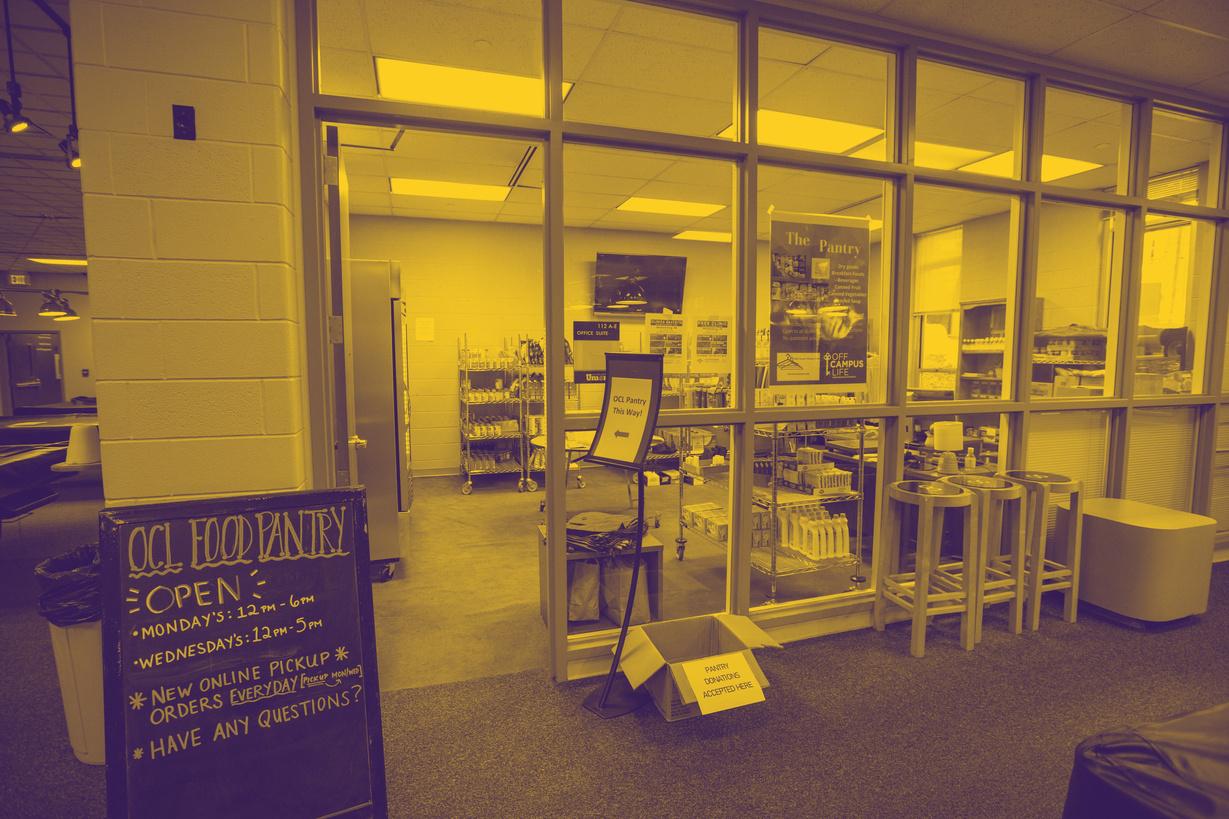
Their journey started in 2020 with Diana
Galarreta-Aima, who’s not only an associate professor of Spanish but the head of JMU’s medical Spanish minor. Galarreta-Aima said she found out about the disparity while reading an article for one of her medical Spanish classes and decided to take action.
“[The disparity] kind of just caught my attention,” Galarreta-Aima said. “I decided to reach out to some of my colleagues to see if they’d be interested in working to learn more about how specifically these communities were affected.”
After Galarreta-Aima got her colleague, Carlos Alemán, a professor of communications, to join her. It was Alemán who asked Tobias ReynoldsTylus and Andrea Martinez Gonzalez, both assistant professors of communications, to also join the project.
Galarreta-Aima came up with the idea to apply for the 4-VA grant, which, according to the
4-VA website, aims “to promote collaboration that leverage the strengths” of the eight Virginia universities involved in the program, one of which is JMU. 4-VA, according to its website, works to achieve four initiatives within the Virginia system of universities: encouraging collaborative research, course redesign, course sharing and degree completion. The professors decided to use the grant money to incentivize local members of the Spanish-speaking community to take the survey they designed by offering to pay participants.
The group worked together to create a survey asking where participants got most of their medical information and who they trust to give that information to. Then they dispersed the survey virtually to the local Spanish-speaking community using the survey service Qualtrics.
Alemán said he saw that the idea for the project was very timely and important. He said

that, though his expertise is not in medical communications, he’s very involved with the local community, especially with local Latinx organizations.
Galarreta-Aima said the collaboration between the group members who each have differing strengths was a major asset to the project.
“I don’t know a lot about things like how to give surveys, collect data or analyze data items, it’s not my area of expertise,” Galarreta-Aima said. “I think one of the great things about this project is that it brought together people with different skills and abilities.”
The question of trust played a major role in their work, too, Alemán said. He added that they had to understand the level of trust people in the Latinx community had in different sources of medical information, like doctors, pharmacists and the internet.
The group wasn’t focusing on who the Latinx comunity trusts, Alemán said, but moreso what the community trusts those sources for.
Martinez Gonzalez said in today’s world, there are many different sources of information, so what really interested her was which sources the Latinx community was trusting. She said she found herself surprised that, while most participants said they trusted the government as well as federal and local medical professionals, many participants trusted the federal side more than the local.
“I thought [those they surveyed] would be more drawn to local, Hispanic- or Latinotailored sources and it didn’t pan out that way,” Martinez Gonzalez said. “They wanted to hear from large, nationally established sources. They didn’t want extra tailoring to them.”
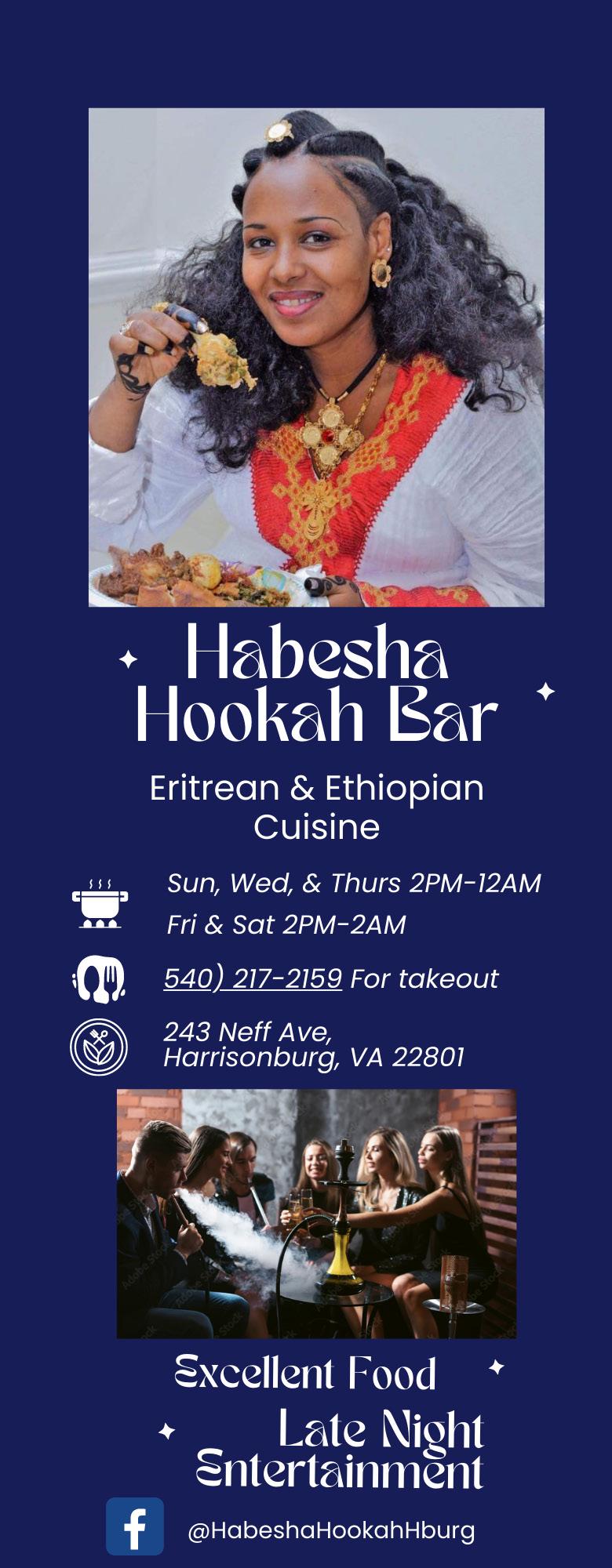
Reynolds-Tylus said not everyone they surveyed trusted these nationally established sources. He said that during the survey many of those who said they were fully vaccinated put more trust in those nationally established sources, while on the other hand, many who said they were partially vaccinated didn’t trust traditional national or local sources.
One big effect the team found that played a role in the disparity, Galarreta-Aima said, was that many members of the local Latinx community were essential workers and the lack of adequate support they received from their employers at the beginning of the pandemic.
“[Locally], one of the main industries is agriculture,” Galarreta-Aima said. “So a lot of local workers had to keep going to work, and at the beginning of the pandemic their employers didn’t offer enough services to really help this population.”
Another thing Galarreta-Aima pointed out as a possible cause for the disparity was the fact that a large part of the Latinx community in the U.S. is without health insurance. The rate of uninsured Latinos in America, according to Census.gov, is 17.7%, making the Latinx community one of the minority groups with the highest rate of uninsured members.
The third big issue that allowed this disparity to form, Reynolds-Tylus said, is the spread of misinformation. Reynolds-Tylus doesn’t think the problem of misinformation is new, he said, but he does think the pandemic helped bring it to the public’s attention. Misinformation about the virus, Martinez Gonzalez agreed created a lot of doubt about the virus within all communities, including the Latinx community.
“There’s this discussion that we’re living in more than one pandemic — not just the COVID-19 pandemic, but the pandemic of misinformation as well,” Reynolds-Tylus said. “The way traditional media has changed with social media is now everyone can share their opinion. There’s less of the gatekeeping that came with only getting your information from experts in traditional media.”
Martinez Gonzalez pointed out that their survey didn’t cover everyone in the Latinx community, just those with access to the technology to participate in the survey. This is something she said is important to note when looking at the results of their survey, like how a majority of participants indicated they got a lot of their medical information from the internet.
Galarreta-Aima said one of the most important means of closing the disparity would be to provide more medical information in Spanish instead of just English. She said that in her work as the head of the medical Spanish minor, she hopes to be working toward that goal herself.

“It’s not just about making sure the students are linguistically competent to provide care to Spanish-speaking patients,” Galarreta-Aima said, “but it’s also about making sure they’re culturally competent too. There is a need in hospitals for volunteers to help with those barriers.”
CONTACT Morgan Blair at blairml@dukes. jmu.edu. For more on the culture, arts and lifestyle of the JMU and Harrisonburg communities, follow the culture desk on Twitter and Instagram @Breeze_Culture.
JMU swim & dive establishes temporary conference affiliation with CCSA A new conference banner
from SWIM & DIVE, page 1This all works fine, except for one problem for the last two years: The Dukes haven’t known if they could compete in a conference tournament. COVID-19 and the CAA postseason ban put JMU in a precarious situation — the team has had to prepare for an unconventional end to the season since 2020.
But stability returned to the swim & dive program with JMU Athletic Director Jeff Bourne and Pedersen’s announcement Nov. 10 that the Dukes are joining the Coastal Collegiate Sports Association (CCSA) as an affiliate program.
“For the first time in three years, we knew, ‘OK, this is where our championship meet is going to be,’” Pedersen said. “For once in a long time, we don’t have to worry about what the end of our season [will] look like.”
The move marks the second affiliate conference JMU has joined since announcing its move to the Sun Belt in November 2021. Lacrosse shifted to the American Collegiate Conference in February, and field hockey became an independent program for its fall 2022 campaign, but swim & dive stayed as an independent heading into the season.
Once JMU released the 2022-23 schedule, the conference wasn’t announced but there were “conference championships” listed on the JMU Athletics webpage for the program. Then, about two weeks later, Bourne and Pedersen made the announcement with CCSA Commissioner Jerome Rodgers.
“The CCSA will be a great home for our swimming & diving program for the 202223 season and will provide a high-level
championship opportunity for our studentathletes,” Bourne said to JMU Athletics.
The CCSA women’s division for swim & dive is made up of 10 programs, some of which the Dukes have already competed against, including Old Dominion, Queens (N.C.) and UNC Asheville. JMU is also conference mates with Sun Belt school Georgia Southern, but the Dukes won’t see the Eagles until the CCSA conference championships in March.
“It’s nice because some of our other Sun Belt schools are going to be in this conference, too,” Ryan said. “So it kind of connects us to the rest of the school.”
It took a while for Bourne and Pedersen to find the right place for swim & dive, since the Sun Belt doesn’t sponsor the sport. The conference announced its plans to sponsor it no later than the 2023-24 season during its annual spring meeting June 6, and while the ECAC Open Championships from last season were a solid last-minute addition for JMU, it wasn’t a permanent solution.
Then came the CCSA.
The conference sponsors three major sports — men’s and women’s swim & dive and beach volleyball. It’s mostly built as a program for schools to compete where the school’s main affiliation doesn’t sponsor these sports.
Enter JMU.
“The CCSA was kind of always the target,” Pedersen said. “It was kind of our first choice. And it’s great that at the end of this whole process, it was a great mutual selection of us getting in where we wanted to be and where we wanted to be wanting us to get in.”
Since the Sun Belt is working toward a swim & dive sponsorship, the Dukes will
eventually make that transition. The CCSA was an option that gave JMU a competitive conference that boosted recruitment and created a new challenge, while also providing a welcoming,but temporary home.
“We needed somebody who wasn’t going to be scorned by the fact that we only wanted to be there a year, and the CCSA was kind of a perfect partner for that,” Pedersen said. “And they were very open-minded and flexible in that sense.”
Ryan said she had an idea that the Dukes may end up in the CCSA but the team didn’t really get any confirmation until Pedersen told them collectively. Plus, most of them hadn’t even heard of the conference.
But that’s part of what made the announcement that much more exciting, they said.
“I knew that whenever we left the CAA, a lot of people on my team were spitballing what conferences ... we could go to,” senior freestyler/individual medley swimmer Karen Siddoway said. “After we went to ECACs, we were like, ‘OK, so what conferences could we go to?’ And there’s only so many conference needs that we’re like, OK, like, you know, going back and forth on. But that was one of them that we’re excited about.”
JMU is currently on its midseason break after defeating Richmond 197-111 Saturday. Once the Dukes return to the pool against Marshall on Jan. 14, there are only a few more opportunities for them to prepare for the conference championships in Knoxville, Tennessee.
The CCSA conference championships is one of the biggest meets of the year, and the Dukes have an unusual outlook on the
meet. Well, unusual compared to when JMU competed in the CAA.
“We don’t have any expectations, I think, and that’s kind of a relief,” Siddoway said. “We have no history or anything with these other teams. So we can just kind of like go and have fun ,and like, see what we’re capable of.”
Since JMU won four straight CAA titles, being in the CCSA is a “fresh start” of sorts, Ryan said, since they aren’t the ones other teams are vying to defeat. The Dukes are still projected to finish in the top five of the 10 programs, but for the first time in quite a few years, they aren’t the hunted, but instead, the hunters.
“It’s kind of nice to not have the target on your back,” Pedersen said. “So, knowing that there are teams that are as strong, if not stronger, than us, and you know, we’ll see how the season goes. But I think by the time we get to our conference championship meet, we will not be the favorites. And to be honest, maybe that sounds like a negative, but I think our girls are actually kind of looking forward to that because they’ve always, for the last four or five years, they’ve always had, almost had this defending mechanism in their mind.”
After feeling unstable for the last two years, JMU swim & dive found its place. It opened up more moments for the Dukes to make program history yet again, and gave them a chance to compete with a conference logo they can wear.
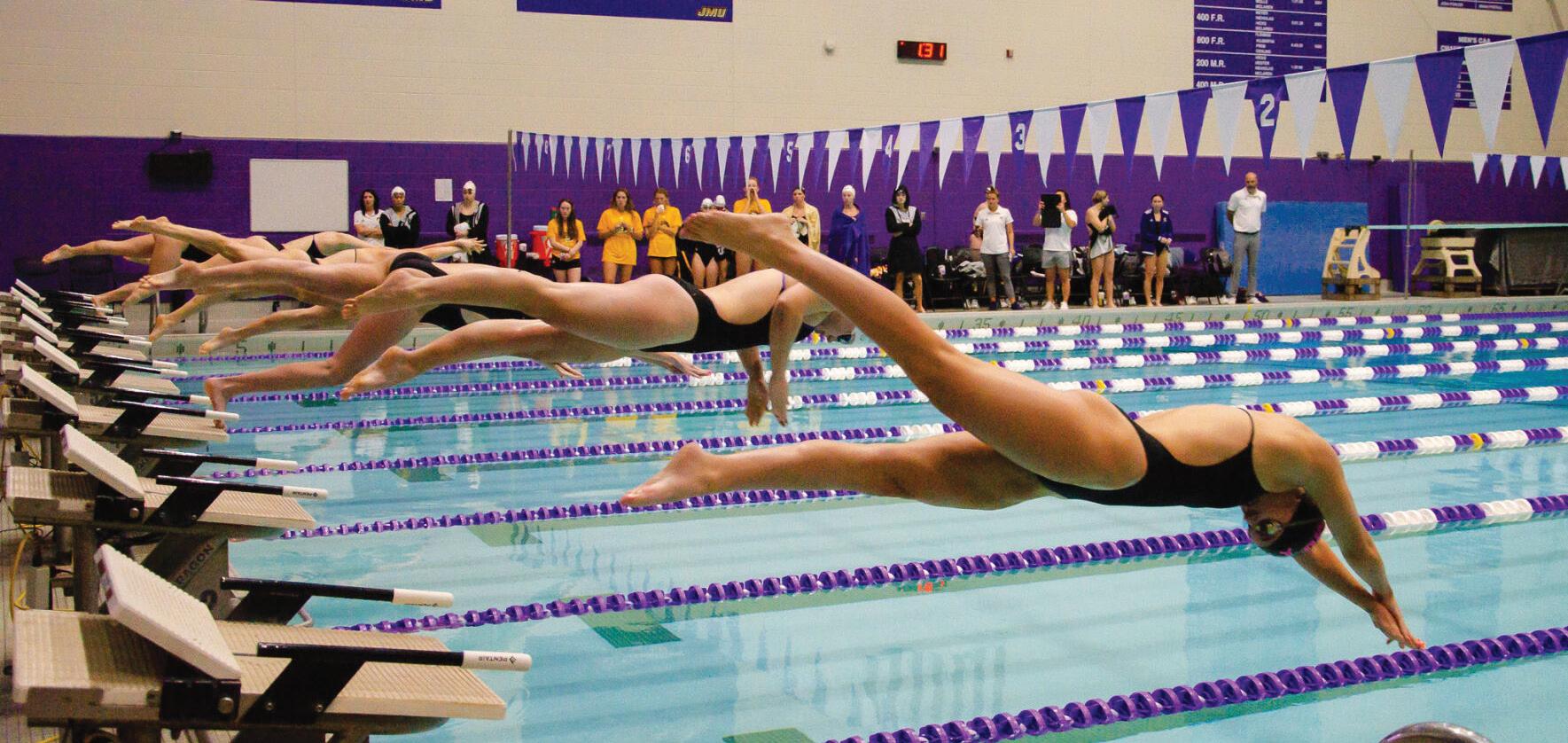
For now, that is.
CONTACT Madison Hricik at breezesports@ gmail.com. For swim & dive coverage, follow the sports desk on Twitter @TheBreezeSports.

Lost and found
Cignetti, JMU coaching legend rekindled relationship before season finale
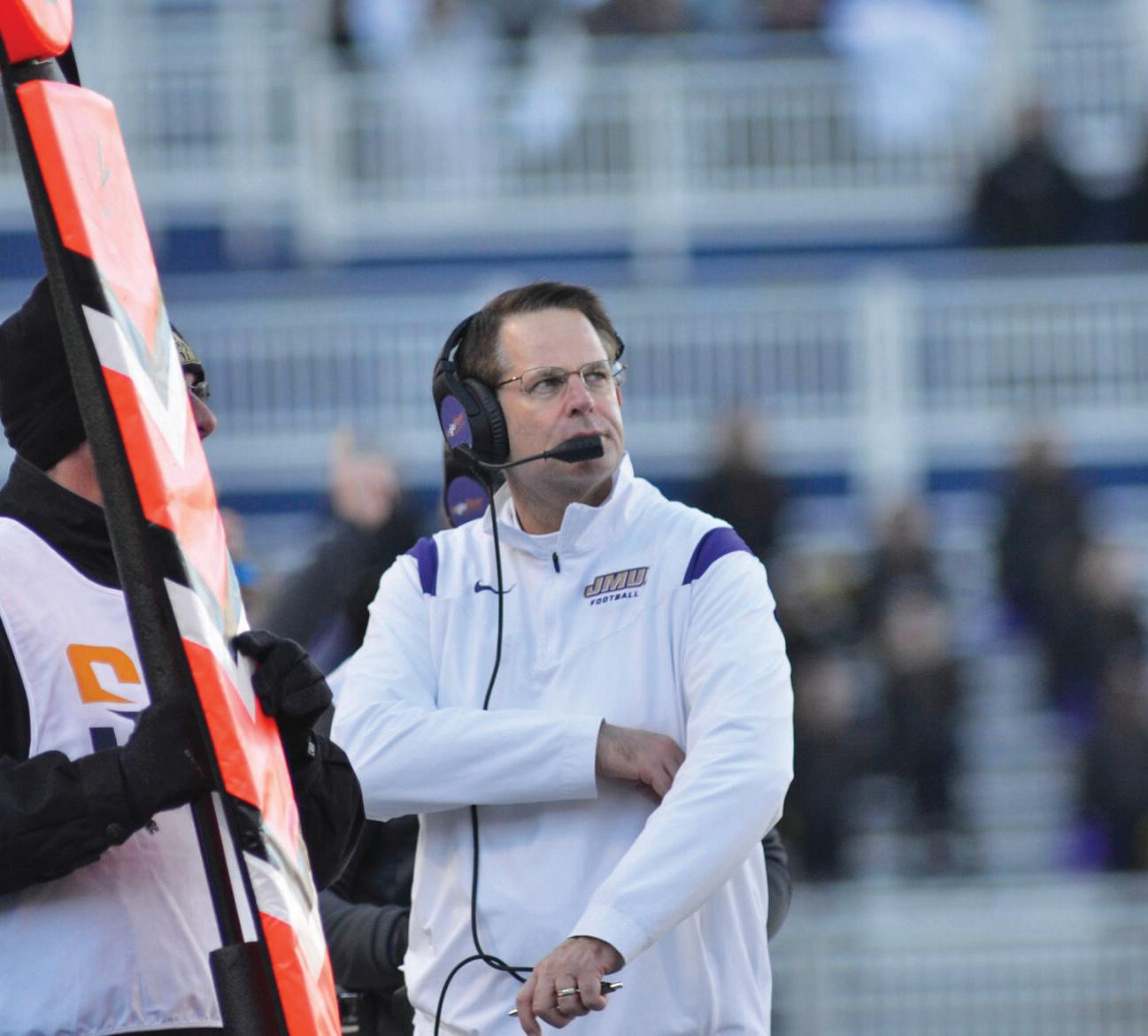 from COACH CONNECTIONS, page 1
from COACH CONNECTIONS, page 1
“He told us to rip their heads off,” graduate transfer quarterback Todd Centeio said with a smile.
A
tale of two assistants
Cignetti and Matthews first met in 1986. Cignetti was the quarterback coach at Rice, and Matthews served as the defensive backs coach at Houston. Cignetti was only 23 years old, and the two universities were only about 10 minutes from each other.
Both serving as assistants to their respective schools, Matthews said, they’d see each other from time to time.
At the end of the 1986 season, the two coached against each other in the Bayou Bucket, the semi-regular annual rivalry between Houston and Rice, and Cignetti said he remembers talking with Matthews quite a bit before the start of the game.
Matthews left Houston the following year, but he said they always stayed in touch and remained friends.
“We didn’t call each other every week,” Matthews said, “but we’ve always been aware of each other’s careers in the college football world.”
Matthews coached at JMU for 13 seasons. In the same time span, Cignetti coached at four different places, including at Alabama from 2007-10, and grew from a quarterbacks
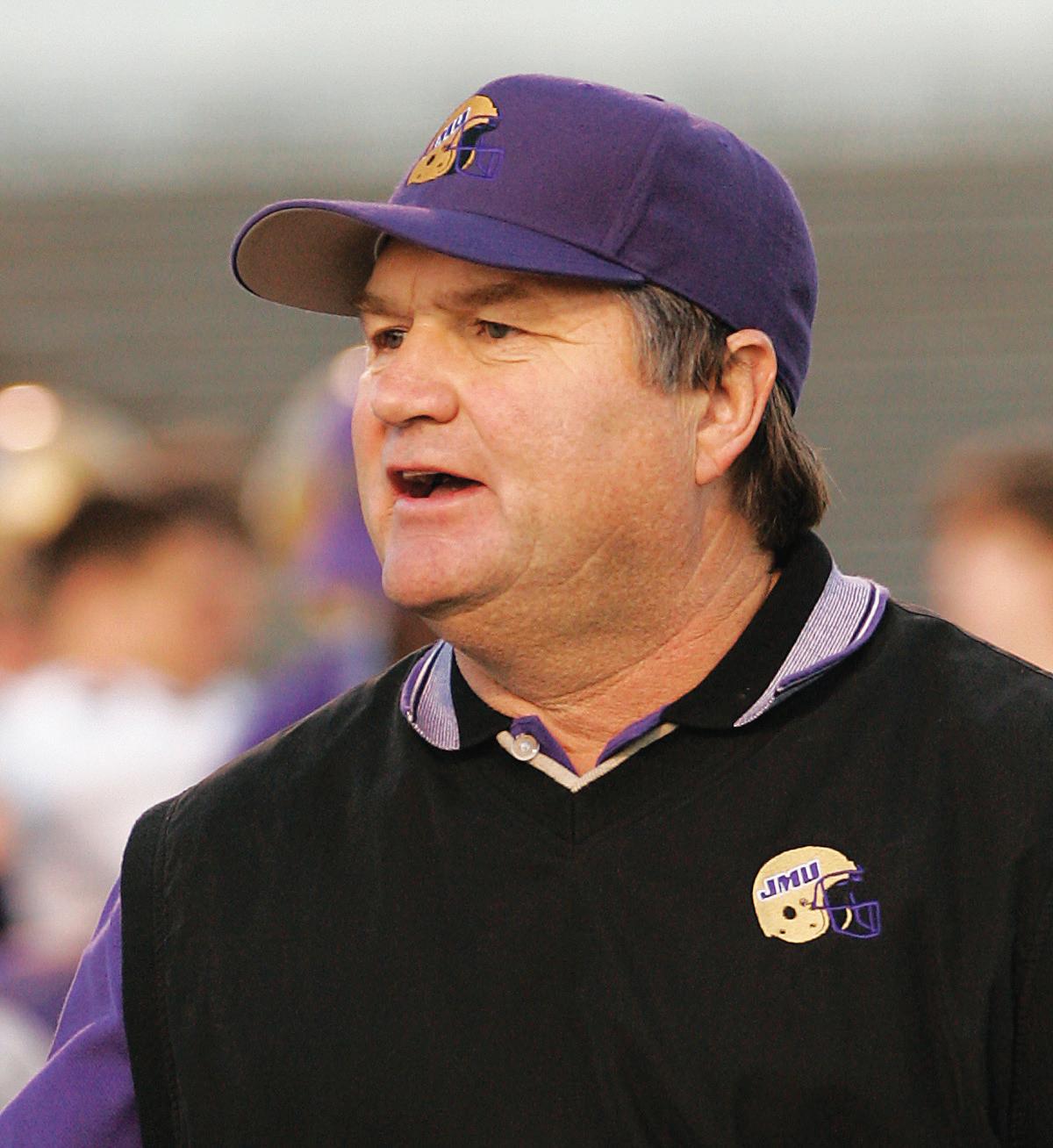
coach to a head coach.
Eventually, Matthews left JMU. Two head coaches later, Cignetti left Elon and moved to Harrisonburg to sit in the same chair, in the same office Matthews used to.
“He was a natural,” Matthews said of Cignetti, who’s from Pittsburgh, Pennsylvania, when he got the JMU job in 2018. “I used to tell everyone that the only thing southern about James Madison was my accent because it’s such a Northern school. There’s so many kids. You go from the north from Pennsylvania, New Jersey and Maryland, and he knows a lot [about] that area. It was a great decision.”
A chair drenched in tradition
Matthews said Cignetti is the only person who understands to sitting in that office as the head coach of the FBS Dukes.
The former leader of the Dukes said, for him, it was Thursdays that were sometimes the hardest. In a typical week, most of the preparation work and practices are done by Thursday nights. From there, it’s onto the game and taking in all of the backlash.
“[It’s] the emotions you feel and the responsibility you feel to the university and to those kids,” Matthews said. “He knew that I knew what he was going through.”
Cignetti said before inviting Matthews to speak, the two sat in his office. He said it was nice talking to someone who understood what it was like to spend late nights in that
chair and carry that weight on his shoulders.
“When you lead a program, you can’t show everybody your true face,” Cignetti said. “It was nice to just be able to sit back and talk to a guy that had been in my chair before and just tell stories.”
They cracked jokes. Matthews reminisced on only having his players wear one helmet color — a gold one — during his tenure. Cignetti’s Dukes use white and gold.
JMU has come a long way, Matthews said — he even jabs that JMU spends more money on helmets nowadays than what his entire equipment budget was.
“I was giving him a hard time,” Matthews said.
Thanksgiving with a side of Chanticleer
Matthews’ daughter is married and lives in Harrisonburg with his grandchildren, so he came back to Virginia from Florida for Thanksgiving.
He hadn’t been back to JMU since he left almost 10 years ago and said “for whatever reason” he texted Cignetti asking to come to practice.
Cignetti responded with, “Great, what time?”
Matthews came to the stadium about 20 minutes before practice started, Cignetti said. The two talked in Cignetti’s office before practice began — Matthews said it was the first time being back in that office since he left JMU.
Then, Cignetti and Matthews went out to practice. Cignetti said it looked like Matthews was really happy being back, and the former Dukes’ head coach agreed.
“The most comfortable I feel in the world is when I’m at Bridgeforth Stadium,” Matthews said. ”I’ve coached a lot of great places, but my school, James Madison, I still associate myself with the most.”
Matthews said he had to make up the message as he went, but he knew the theme of it: Leave no doubt. JMU did the closest thing to that versus Coastal Carolina, downing the Chanticleers 47-7 on Nov. 26 in the Dukes’ season finale.
He said his message in certain words that
“I was pretty good about coming up with that last minute,” Mathews laughed.
Redshirt senior wide receiver Kris Thornton, along with the rest of the Dukes, listened to Matthews intently. Thornton grew up attending JMU games with his parents and he said he remembered watching him coach the team.
Matthews fired the team up then.
Ten years later, Thornton said he still had it.
“He’s a pivotal head coach. He coached JMU for a really long time,” Thornton said. “So it’s nice to have somebody come back and still be rooting for you all this time, even though he hasn’t coached here in like 10 years.”
JMU looks to be in good hands with its current coach, though. Cignetti, 61, said he envisions himself coaching for another 1015 years. He’s the first-ever coach to lead a transitioning FBS team through a full FBS schedule. The Dukes picked up their first AP Top 25 ranking in program history and finished 8-3.
Few, if any, coaches can relate to Cignetti’s situation, but Cignetti thought Matthews could — enough to relay a message to his players in the season’s waning moments.
Matthews, though, initially came to Harrisonburg to visit his family, not to inspire the team who’s helmed by the coach who lives on the same street he used to.
But, Matthews made time for the team he identifies with the most and the coach he met in the the middle of Texas four decades ago — when Cignetti was 23 years old — and not without gratitude.
“I kind of was stunned,” Matthews said of his reaction when Cignetti asked him to speak to his players. “I didn’t think of that, but certainly I can.”
CONTACT Savannah Reger at thebreezeweb@ gmail.com. For more football coverage, follow the sports desk on Twitter @TheBreezeSports.
A strong slate ahead
Analysis | How JMU baseball created its 'challenging' 2023 schedule
By MADISON HRICIK & WILL MORAN The BreezeA new season brings a new schedule, and with JMU joining the Sun Belt Conference, this means a variety of new teams for the Diamond Dukes. There are still some familiar faces, such as Florida State, Virginia Tech and Virginia Military Institute (VMI), among others, but also some never-before-seen opponents like Arkansas State and USC Upstate.
JMU baseball released its schedule for the 2023 season Monday morning. The Breeze spoke with head coach Marlin Ikenberry about how the schedule came together and how he feels ahead of the program’s inaugural Sun Belt season.

Nonconference schedule
A major aspect of making the schedule, Ikenberry said, is that aside from a few tweaks that might need to be made due to lastminute scheduling conflicts, these schedules are made years in advance. The Diamond Dukes open at Florida State for the second consecutive season — a three-game series that’s been set in place since 2020.
“We schedule two or three years out on our nonconference schedule,” Ikenberry said. “So right now, I'm working on 2025 and 2026 schedules and finalizing the 2024 schedule.”
In a similar vein, the conference schedule is made ahead of time as well — not as far in advance, especially considering JMU’s recent
move to the Sun Belt, but Ikenberry said the conference schedule has been finalized since May.
Part of Ikenberry’s reasoning behind selecting difficult nonconference opponents is to help prepare the Diamond Dukes for Sun Belt play and get them used to different playing styles they’ll see again later on. Plus, it allows the coaching staff to understand how the team gels together in these high-pressure situations.
“I think it’s really important that you prepare your guys for a long season," Ikenberry said. “And then you also got to prepare for them and what their roles will be when we get to conference play — [because] the roles will change a little bit.”
In-state opponents
In-state matchups with U.Va., Virginia Tech, VMI, Old Dominion and Radford also dot the Diamond Dukes’ schedule. A May 3 meeting with U.Va. means not only the first matchup versus the Cavaliers since 2019 but also the first meeting between JMU and former Dukes catcher Travis Reifsnider (2019-22). Reifsnider joined the Cavaliers following the 2022 season, when he led the Dukes in home runs, batting average and was second in onbase plus slugging percentage (OPS).
The Dukes and Hokies play a home-andhome series for the second consecutive year on April 25 and May 16. The two teams split the series one season ago with each team winning their home games.
VMI is on the schedule for the 15th season in a row. Ikenberry graduated from VMI in 1995 and coached there from 2004-14.
Old Dominion brings back a rivalry from the old CAA. The Dukes last played the Monarchs in 2017 but will be renewing a conference rivalry that saw the two teams play every year from 1988-2013 while both teams played in the CAA.
“Probably the most unique [matchup] is Old Dominion,” Ikenberry said. “The head coach at Old Dominion recruited and coached me in college for 3 1/2 years, and he just hired the new assistant coach for him who I coached, and he coached with me for close to five seasons, so their staff and I are really close.”
Another upcoming matchup with a former coach is Radford. The Dukes have a homeand-home series with the Highlanders on the schedule for the season, in large part due to their new head coach, Alex Guerra, who served as an assistant coach at JMU for seven years before accepting the Radford head coaching job this past summer.
Sun Belt play
The Diamond Dukes open conference play March 17 against Coastal Carolina. This is earlier than in the past; they started conference play April 2 and March 25 in 2021 and 2022, respectively.
Ikenberry has a history with Coastal Carolina from his days at VMI. He matched up against the Chanticleers while he was a player for the Keydets and coached against them while VMI
CHeck in, check out

The Breeze tracks JMU in the NCAA transfer portal
By SPORTS DESK The BreezeEditor’s note: This is a live document that will be updated online as transfer announcements and commitments are made by each studentathlete.
The NCAA transfer portal is open for football, and after JMU football’s 8-3 first season in the FBS, it’s time for a new recruiting cycle to begin.
The portal is open for FBS players from Dec. 5 to Jan. 18, with an additional 15-day window in mid-May. The biggest exception is that graduate players can transfer at any point. In addition, National Signing Day for collegiate football is Dec. 21, when high school athletes will formally sign with the schools they’ve verbally committed to.
This live document will track current JMU football athletes who’ve entered the transfer portal, where they commit and new athletes that commit to JMU.
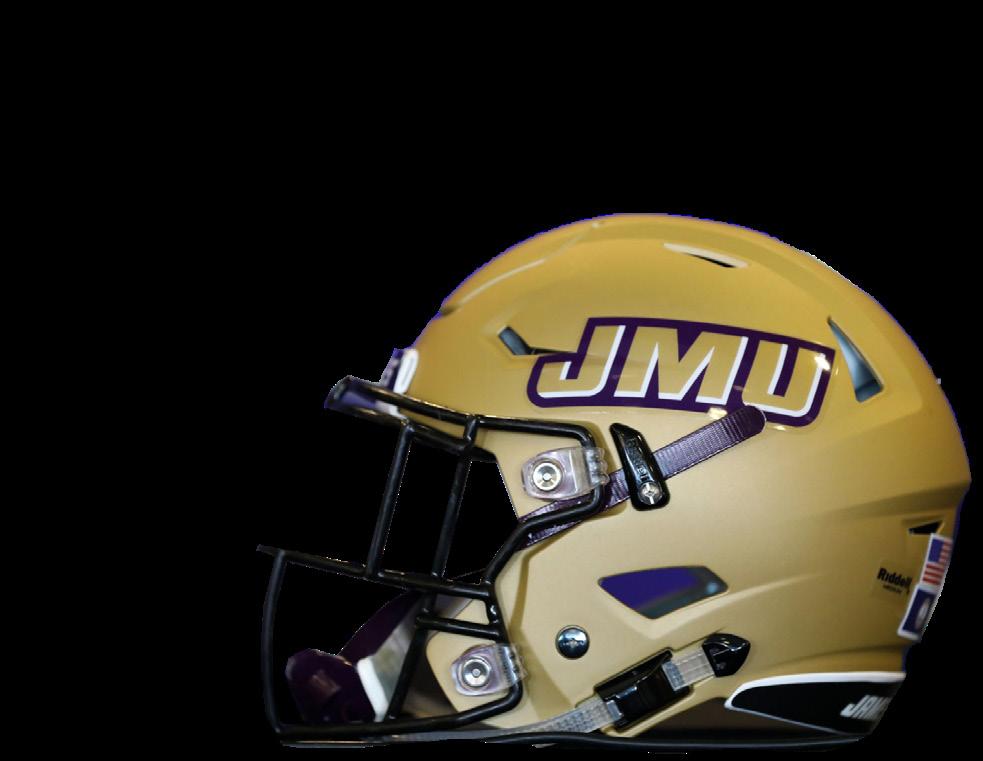
Athletes who’ve entered the portal
Aaron Whear
The redshirt sophomore long snapper was the first JMU player to announce his move to the transfer portal, posting his announcement on Nov. 28. He didn’t play during his three years at JMU. Whear has two years of eligibility.
was in the Big South Conference.
But one of the more adventurous aspects of the season presents Ikenberry with a challenge — flying. JMU plays four Sun Belt West Division programs this season, two of which are on the road. These matchups will require the Dukes to fly during conference play, which this team has never done before.
JMU has already started its preseason training but transitions to full-throttle training once the calendar turns to 2023. Since it’s a year of so many firsts, Ikenberry’s decision for a juggernaut schedule could be exactly what propels the Diamond Dukes through one of the top baseball conferences in the country.
“When you look at every team in the Sun Belt, everyone is competitive,” Ikenberry said. “It’s going to be a really high level of baseball.”
CONTACT Madison Hricik at breezesports@ gmail.com and Will Moran at moranwp@dukes. jmu.edu. For more baseball coverage, follow the sports desk on Twitter @TheBreezeSports.
Athletes who’ve committed to JMU
Phoenix Sproles
Graduate transfer wide receiver Phoenix Sproles comes to the Dukes from North Dakota State. He played 50 games in his Bison career, racking up 61 catches for 888 yards and five touchdowns. Sproles didn’t play in 2022 and comes to JMU with one year of eligibility left.
Jordan McCloud
Graduate transfer quarterback Jordan McCloud started his career at USF from 2019-20 before transferring to Arizona in 2021, where he played three games. McCloud has two years of eligibility left and racked up a career-high 1,429 passing yards with 12 touchdowns and eight interceptions at USF in 2019.
Keep track of this live report at breezejmu.org
CONTACT the sports desk at breezesports@gmail. com. For more football coverage, follow the sports desk on Twitter @TheBreezeSports.


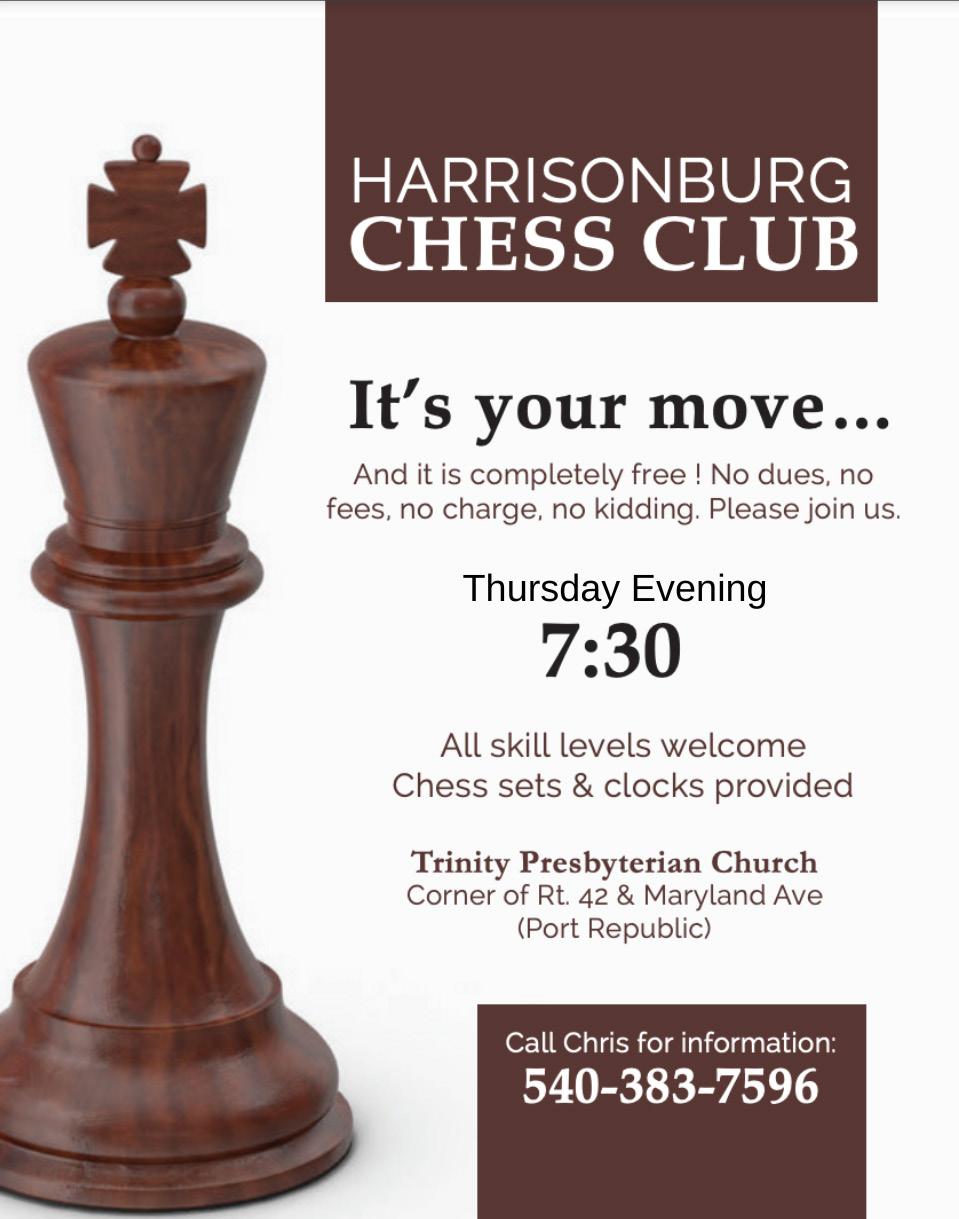
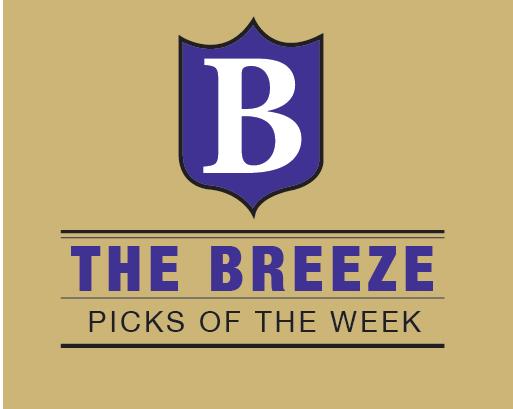
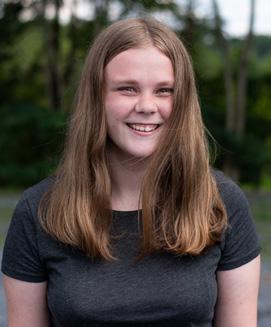


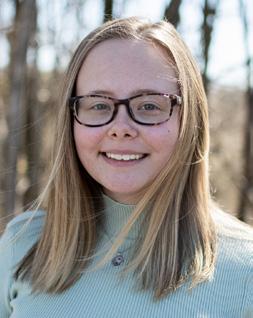
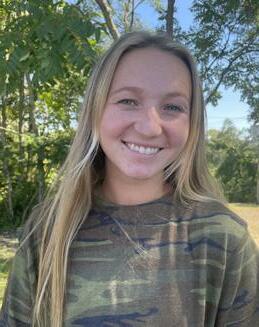
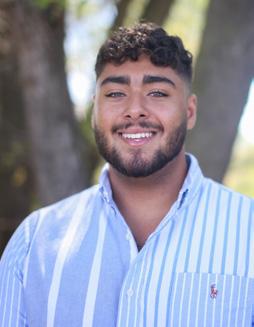
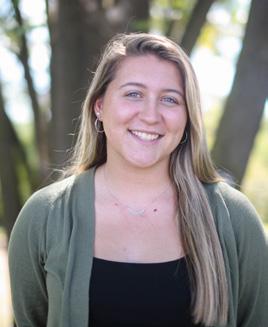

Enrollment lament
Class registration causes students stress as classes fill rapidly
Want to praise someone or get something off your chest? Darts & Pats is the place to do it. Submit your own at breezejmu.org.
A “negligence” dart to my landlord who said they fixed my washing machine.
From someone whose carpet is stained now because it broke again.
An “are-we-there-yet” dart to the ICS taking 10 minutes to arrive then getting stuck waiting for the train to pass.
From someone who had a meeting. A “thanks-for-beingunderstanding” pat to my professor for accommodating my mental health.
From a student who has one less thing to think about for finals week.
A “shop-local” pat to Agora Downtown Market for making my holiday shopping easy.
From someone who appreciates their selection.
Editorial Policies
RUFFNER contributing columnist
The best part of Christmas morning is getting up at the crack of dawn to open presents. College can take students away from their friends and family and, though it’s not quite Christmas, registration offers a preseasonal chance to enjoy those thrills. What’s better than waking up at 6 a.m. to register for classes?
Each student is given an enrollment slot, a time and date marking when they can enroll for classes. The week of Nov. 7, JMU students found themselves up at 6:30 a.m. Backs hunched over laptops and eyes squinted at a screen, they clicked "Enroll". Met with a swirling circle staring back at them, they were forced to wait. A refresh of the page shows what classes each student got — or, more likely, didn't.
Class scheduling, a pain for students across the board and especially freshmen, is a recurring issue at JMU. Most freshmen have the same goal: the completion of the five general education clusters. Cluster One: Skills for the 21st Century must be completed before the end of a student’s first year at JMU. Within each cluster are different sections with different classes each student is expected to take. This causes classes to fill quickly because
everyone is trying to take the same courses.
Most freshmen registered for classes on the same day, Nov. 10. This means a large quantity of people are attempting to schedule at the same time. This year's freshman class is made up of 4,874 students, according to the State Council of Higher Education in Virginia.
Due to large quantities of people with similar goals scheduling at the same time, the likelihood of getting the first pick in classes is slim. Students are forced to try to find classes and remake their schedules at the last minute before their second choice classes also fill.
Ziah Buffington, a freshman, said she had seven classes in her enrollment cart and was only able to get two of those classes after being put on a waitlist for several days.
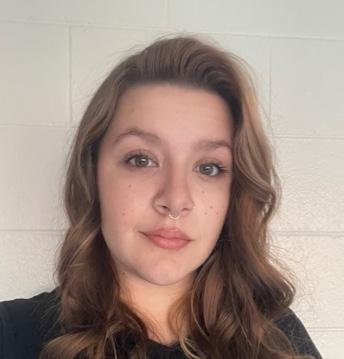
“I thought it was an absolute mess,” Buffington said of her scheduling experience.
Another freshman, Jack Fiorentino, said he used a stopwatch to be exactly on time at 6:30 a.m. and still didn’t get all the classes he’d hoped for. Only one of Fiorentino’s classes was closed before he could enroll, but by the time he’d found a replacement, the others had begun to fill, too.
When classes fill more quickly than light, getting the first choice is nearly impossible. This leaves students to reschedule with
whatever classes are still open. Early morning and late evening classes tend to be the last to fill, which can lead to random gaps in students’ schedules.
When class schedules aren’t ideal, it can affect a student’s ability to get or stay at a job due to time constraints. Students who work part-time may have to work early in the morning, late in the night or try to squeeze a short shift in between classes.
Many students already have to work and study at irregular hours, which can be stressful. Work and money are also major causes of stress, according to the American Psychological Association. A irregular schedule for students can increase the amount of stress students already have. This stress can put extra restraints on a students' life which can negatively impact their academic, social and physical health.

Having to wake up earlier than usual to sit through the anxiety and panic of the lagging enrollment page is stressful, and having to search for replacement classes isn't pretty like presents under the Christmas tree. At the end of the day, the enrollment process is the grinch who stole what could’ve been Christmas
CONTACT Hailey Ruffner at ruffnehl@ dukes.jmu.edu. For more editorials regarding the JMU and Harrisonburg communities, follow the opinion desk on Instagram and Twitter @Breeze_Opinion.
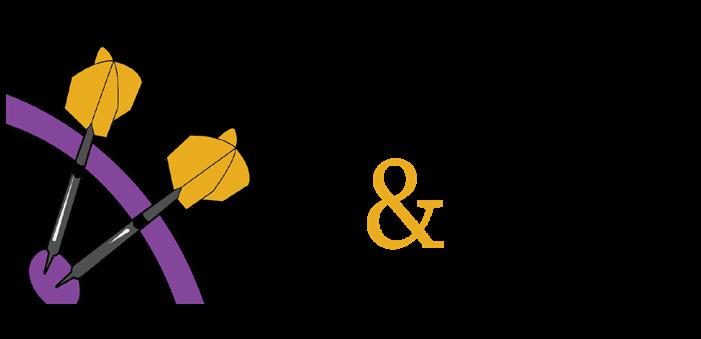
The Breeze
The Breeze reserves the right to edit submissions for length, grammar and if material is libelous, factually inaccurate or unclear. The Breeze assumes the rights to any published work. Opinions expressed in this page, with the exception of editorials, are not necessarily those of The Breeze or its staff.
Letters and guest columns should be submitted in print or via e-mail and must include name, phone number, major/year if author is a current student (or year of graduation), professional title (if applicable) and place of residence if author is not a JMU student.
Supply of study spaces
With Carrier closing next year, JMU needs to open additional study spaces
ORIANA LUKAS opinions with oriana
JMU’s campus is a broad area that’s constantly growing and embarking on renovations. Currently, JMU has two libraries — Carrier on Main Campus and Rose on East Campus — that are used by most of the student population. This lets students choose a study space close to their classes.
With Carrier Library closing from 2023 to 2026 for renovations, Rose will be the only functioning library on campus. This will inevitably lead to overcrowding in other buildings such as the Student Success Center and Madison Union, and it’ll potentially decrease student productivity. JMU needs to plan for and prioritize new study spaces for students in order to compensate for the loss of the space from Carrier.
Carrier Library, originally built in 1939, was the first stand-alone library on campus. Since then, it’s received many renovations as the campus capacity increases annually, with a 97% rise in off-campus enrollment from 10,822 in fall 1987 to 21,270 in fall 2016 according to JMU’s Office of Institutional Research. The primary incentives for the renovations starting this May are concerns about accessibility, Americans with Disabilities Act (ADA) compliance, navigability and overcrowding.
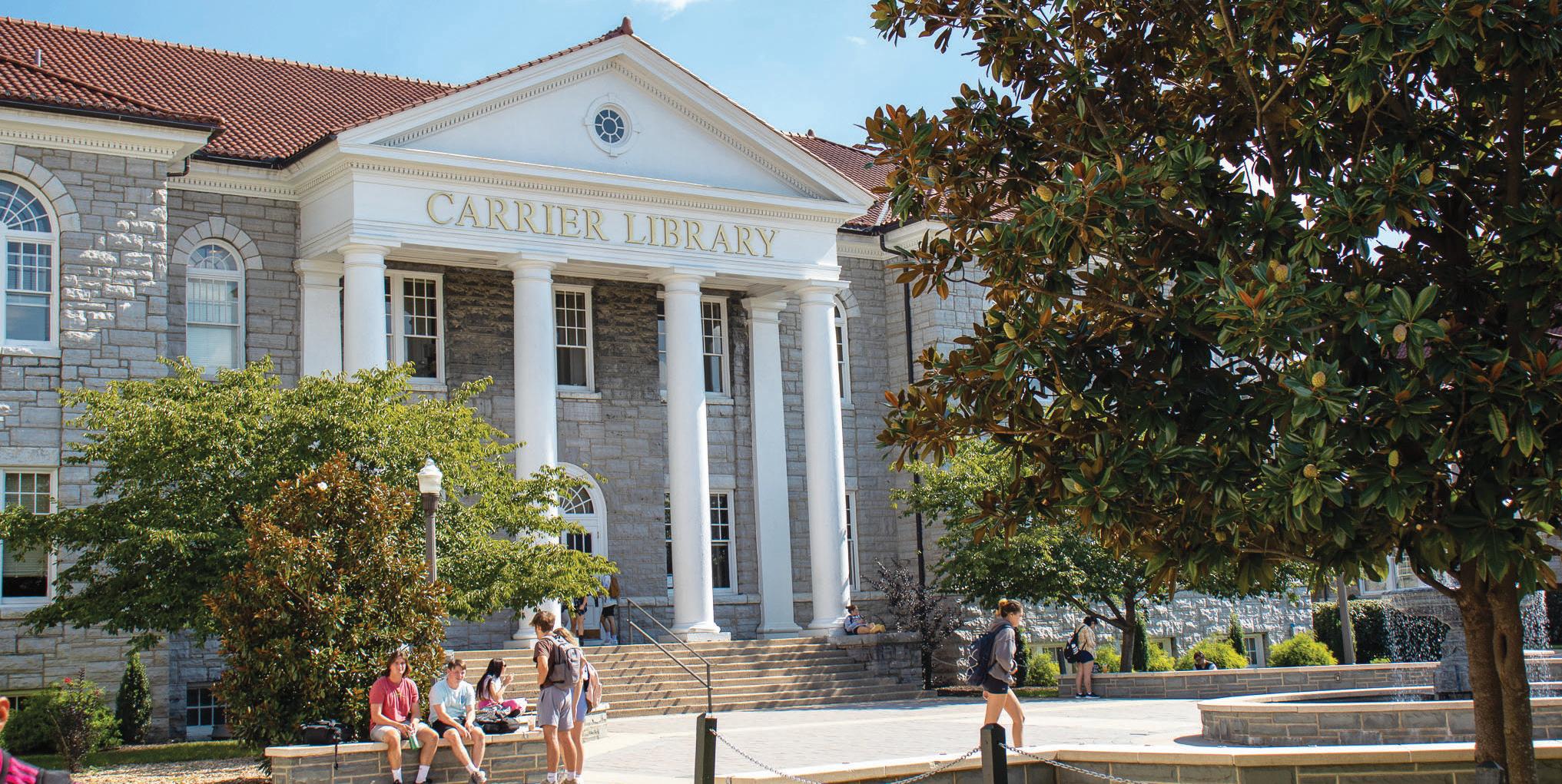
Though these modifications hold long-term benefits for students in the future, the next few years will be difficult for some. Due to schedules and proximity, Carrier is a primary study space for many students and can facilitate well over 350 students, its original capcity. Junior Baylor Wood frequents Carrier.
“I like the atmosphere of the library because seeing other people study motivates me to be more productive and overall it’s more quiet than other spaces,” Wood said. “It’s also close to my classes so I like to go there in between.”
There’s a critical need for college campuses to have an abundant amount of study spaces for students, as it’s shown that students demonstrate more academic success when they take advantage of the library space and resources. Libraries offer various resources that students can benefit from. They also allow students to get in a productive headspace in a quiet place rather than in a bedroom, which is often non-stimulating and offers several distractions, like watching TV. According to the American College of Healthcare Sciences, students who specifically use their beds to study are often set up for failure as the temptation to sleep or multitask increases. Woods said she often finds herself distracted when trying to work at home.
“I’m usually pretty good at doing work at my desk, but I would say I still get more distracted
because of my roommates and will end up talking with them instead of doing work,” Wood said.
Along with the importance of productivity, library resources are included in tuition. Students pay thousands of dollars a year to be able to use these study spaces and resources. Online resources will still be available during the renovations, but that won’t make up for the lack of space. During this time, JMU will only have one active library at a school that’s
First time for everything
had over 20,000 students since 2016. While JMU has said it plans to open up more spaces for students during this process, administration needs to make sure it can accommodate the overflowing demand.
CONTACT Oriana Lukas at lukasok@dukes.jmu. edu. For more editorials regarding the JMU and Harrisonburg communities, follow the opinion desk on Instagram and Twitter @Breeze_Opinion.
Kindergarteners and college freshmen have similar needs as they enter new environments
AVA MENONI contributing columnist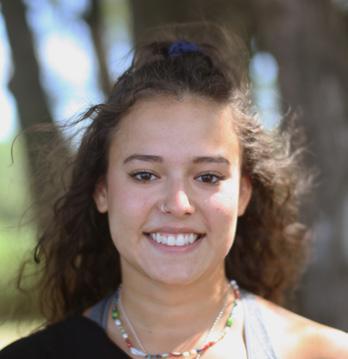
Although it may be insulting to compare JMU’s class of 2026 to whiny kindergarteners, the similarities can give insight on how to handle the transition to college.
First-year college students and kindergarteners can be compared in many ways. For example, both age groups deal with persistent sickness throughout this stage in their life because of their new environments. For kindergarteners, the sickness is called “daycare syndrome” and for college students, it’s called the “frat flu” — or here, the J-MFlu. Both of the sicknesses can strengthen immune systems but also cause a lack of
sleep and stress.
Despite being in extremely different stages in life, first-year college students and kindergarteners can be compared based on their common needs. Both need a sense of belonging, emotional self-regulation and strong support systems.
According to Illinois Early Learning, the “basic sense of belonging supports children to try new activities, to make new friends, to learn new ways of doing things, to take small risks.” For a kindergartener, a sense of belonging gives them the confidence to step out of their comfort zone.
It’s the same way for freshmen. In fact, a sense of belonging can make or break a student’s college experience.
“[It’s] one of the strongest predictors of
retention,” first-year academic adviser and child development professor Robyn Kondrad said, “Meaning if the student is going to stay at JMU, they need to feel a sense of belonging.”
She gave examples that joining clubs, making friends in classes and getting along with roommates are all things that make a student more likely to return to JMU the following year. It can be argued that a sense of belonging is more critical to retention compared to their academic grades.
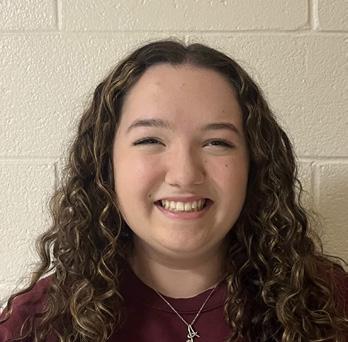
Kondrad also said the preparation for kindergarten and college can be similar, emphasizing that emotional self-regulation and a strong support system are essential for success in both stages of life due to increased independence.
Emotional regulation is important because it allows students to express themselves and manage their feelings, which prevents social rejection. For kindergarteners, this can be learning to communicate when a situation is frustrating them instead of having a tantrum. For college freshmen, this can be relieving anxiety about a test by talking to a professor and making a plan instead of ignoring the problem.

Strong support systems are important for every stage in life, but they’re especially beneficial in stages of great change. In both cases, students are entering a new environment, whether that’s moving to a state across the country or leaving a familiar daycare. For kindergarteners, the support system is mainly made up of their parents, caretakers and teachers. College students have a greater network of support systems, which include academic support, counseling
services, faculty and advisers, as well as their personal support system, parents, friends from back home, romantic partners and more.
First-year college students and kindergarteners have common needs, but they can also have similar downfalls. Although strong support systems are good, in both stages of life, too much parental support can be destructive.
“Many first-years are coming from an environment where they’ve had too much support.” Kondrad said. “So, it’s difficult for them in a college environment where you don’t have your parents telling you to go to bed or having them say, ‘Hey, do you have an exam tomorrow?’”
Kondrad added that the intervention of parents in academic environments can be harmful and that it’s important to allow students to grow for themselves and learn how to solve their own problems — this can be created, she said, by maintaining a healthy distance from them. Although parental support is important, she said she believes students need to learn how to make mistakes and learn from them.
First-year students can navigate their transition into college life by looking back to their past kindergarten selves. Reflecting on questions such as “How did I make friends?” or “How did I learn how to be content with being alone?” can be helpful in figuring out this new stage of life
CONTACT Ava Menoni at menoniap@ dukes.jmu.edu. For more editorials regarding the JMU and Harrisonburg communities, follow the opinion desk on Instagram and Twitter @Breeze_Opinion.





Career Opportunity - Technician II - Facility Maintenance
Are you seeking a rewarding opportunity that allows you to utilize your skills in performing a variety of facility cleaning/maintenance duties while making a direct impact each day? If so, apply for the Technician II-Facility Maintenance position with the City of Harrisonburg Public Works Department! Learn more/apply: https://www.harrisonburgva. gov/employment. EOE.
Career Opportunity - Sign Graphics


Designer & Fabricator
Do you want a career that allows you to utilize your technical/creative skills and experience to design/manufacture a variety of signs for traffic control/City facilities? If so, the City’s Public Works Department’s Sign Graphics Designer & Fabricator role may be the right position for you! Find out more/apply: https:// www.harrisonburgva.gov/employment. EOE.
MADISON MARKETPLACE
Madison Marketplace is open for business, and all text-only listings are FREE ! Post job listings, announcements, rentals and more using our online placement tool. Ads run two weeks online and in two print editions.
CITY OF HARRISONBURG JOBS JOBS COMMUNITY
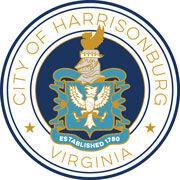
Career
Opportunity - Custodian / Custodian Senior
Do you want a career with the City that helps project a friendly image to our citizens, employees, and others? If so, the Public Transportation Department’s Custodian Senior position may be the right opportunity for you! Find out more/apply online: https:// www.harrisonburgva.gov/employment. EOE.
Unpaid Internship Opportunity

Water Service Technician
(Full-Time)
Opportunity - Front Line Transit Supervisor (Night-Shift)
Career
Do you want a challenging career that allows you to grow as a leader while making a difference in the local community by using your knowledge/experience in public transportation? If so, consider the City of Harrisonburg Public Transportation Department’s Front Line Transit Supervisor (Night-Shift) position! Find out more/ apply: https://www.harrisonburgva.gov/
Do you want a career that helps provide a meaningful service to the community through in-field customer response? If so, the Public Utilities Department’s Water Service Technician may be the right job for you! Find out more/apply online: https:// www.harrisonburgva.gov/employment. EOE.
- City of Harrisonburg’s
City Manager’s Office
Are you a student seeking real-world experience in public administration with a locality recognized both regionally and nationally for a variety of achievements? If so, apply to the City of Harrisonburg’s City Manager’s Office Internship Opportunity! Find out more/apply online: https://www. harrisonburgva.gov/employment. EOE.
Post your ad at BreezeJMU.org/ classifieds
